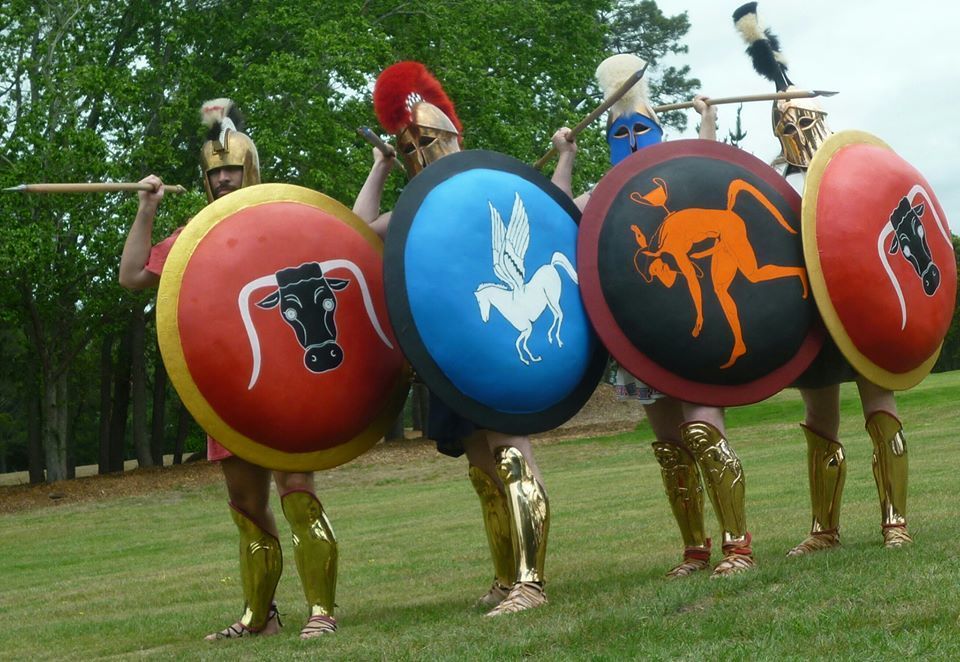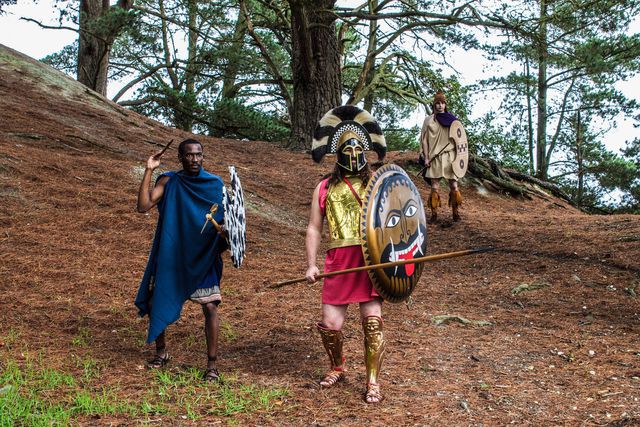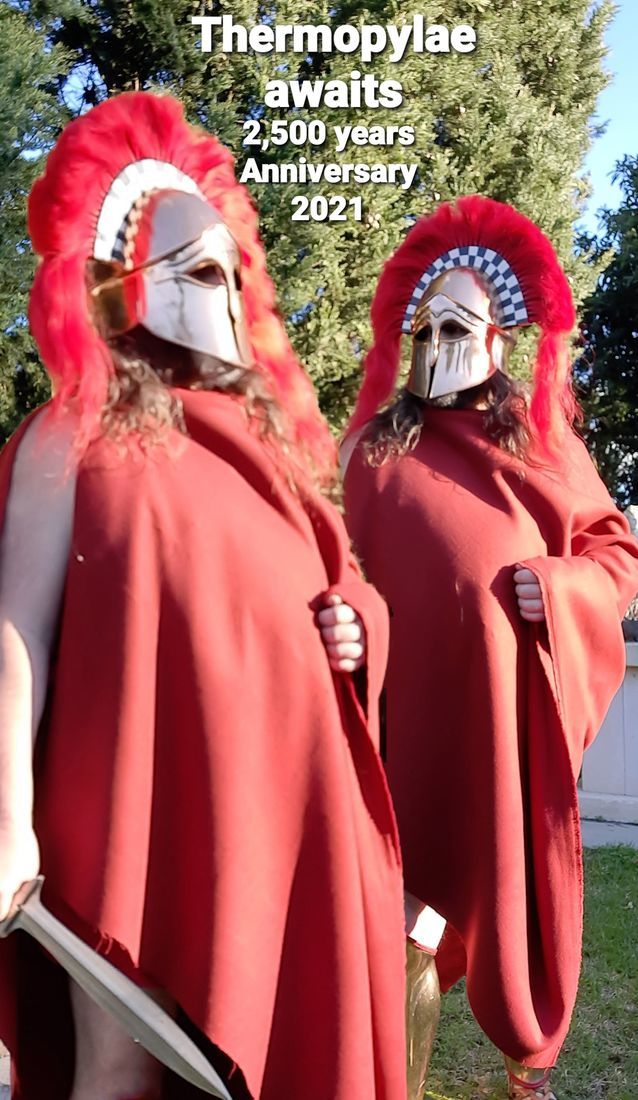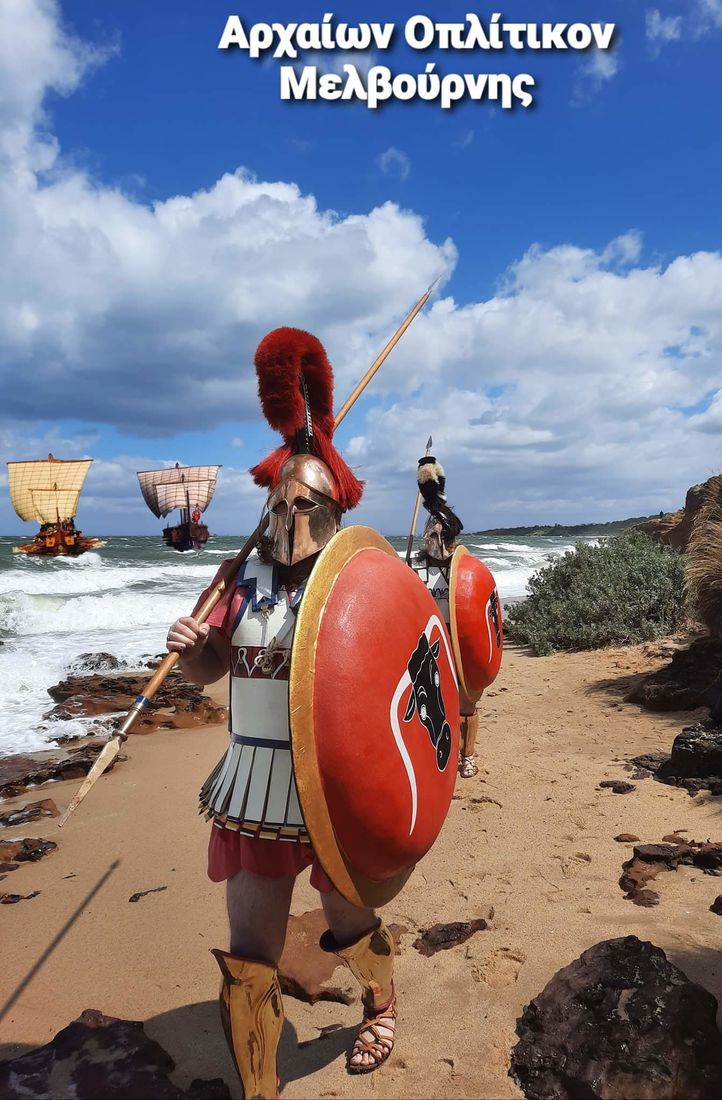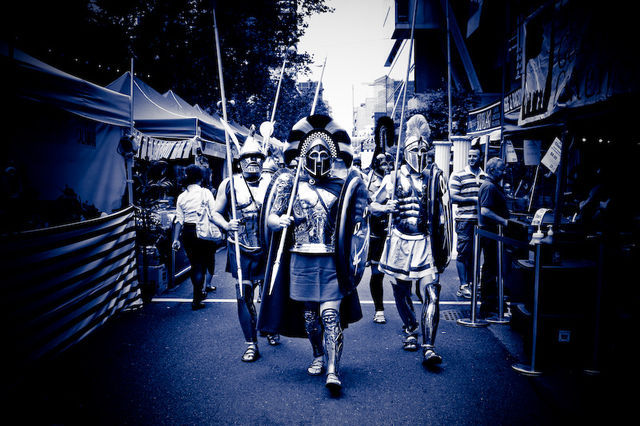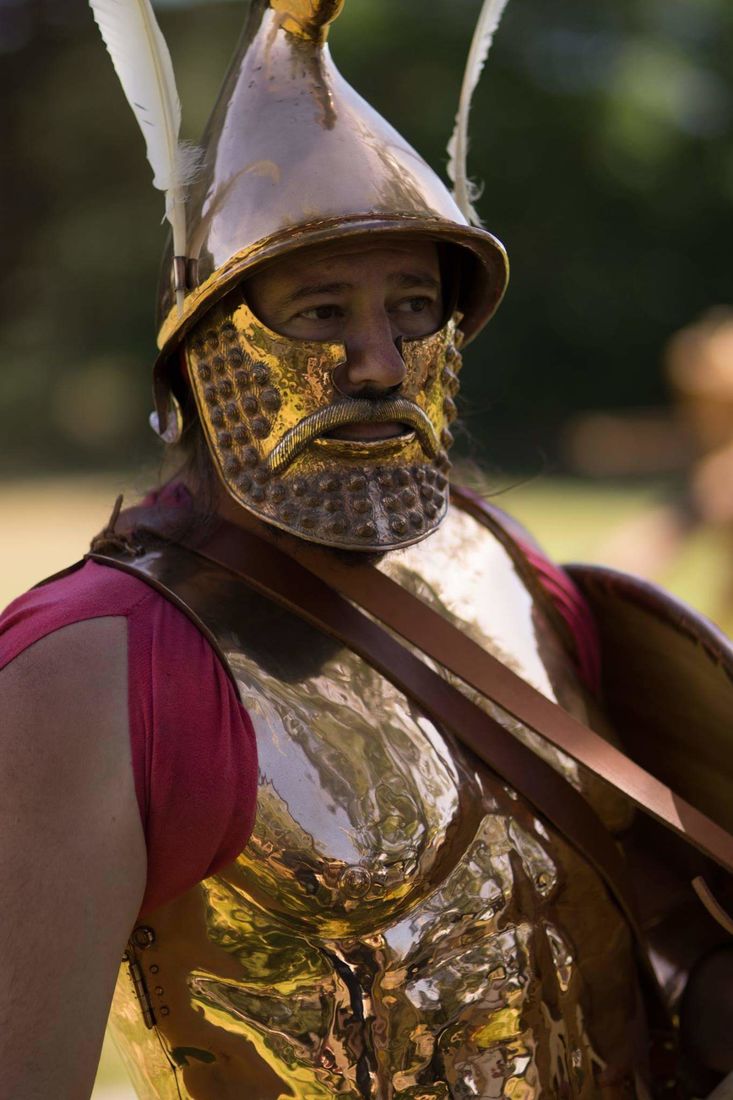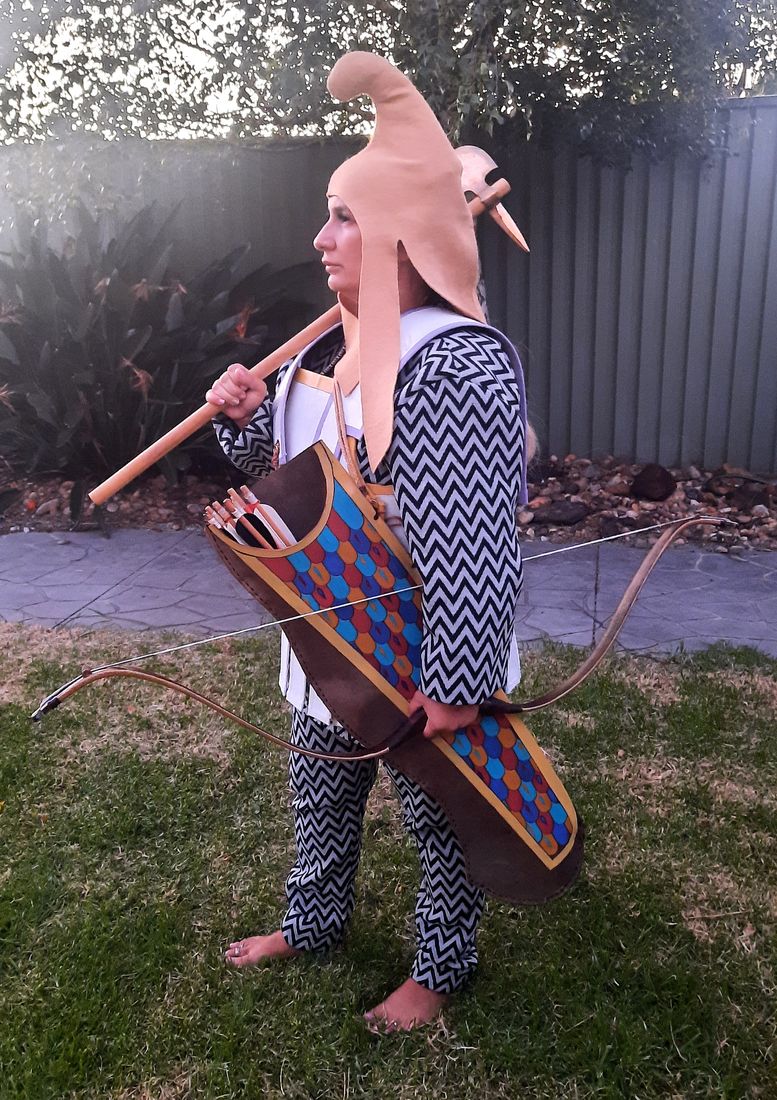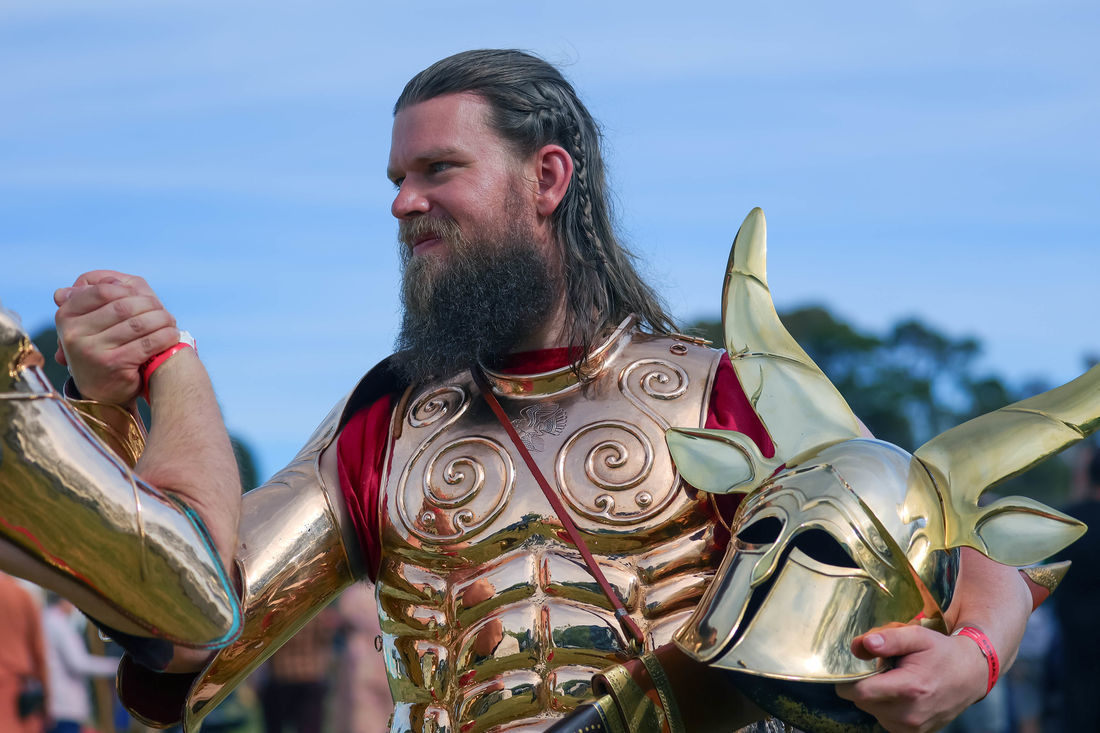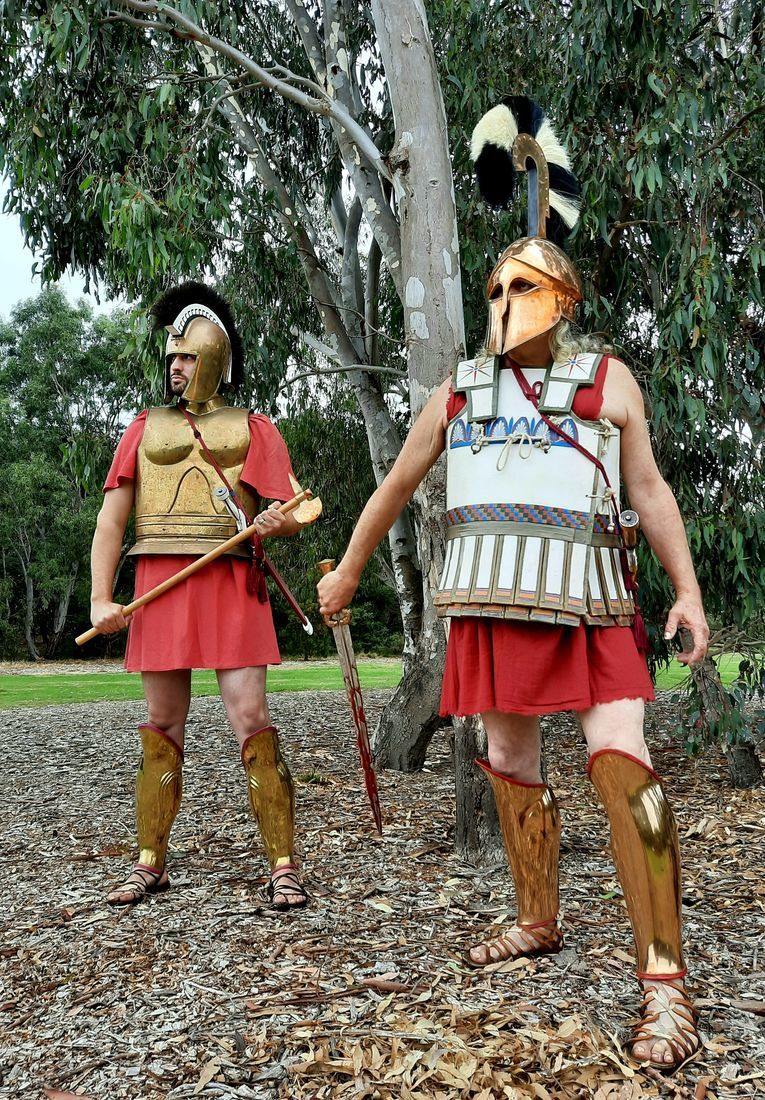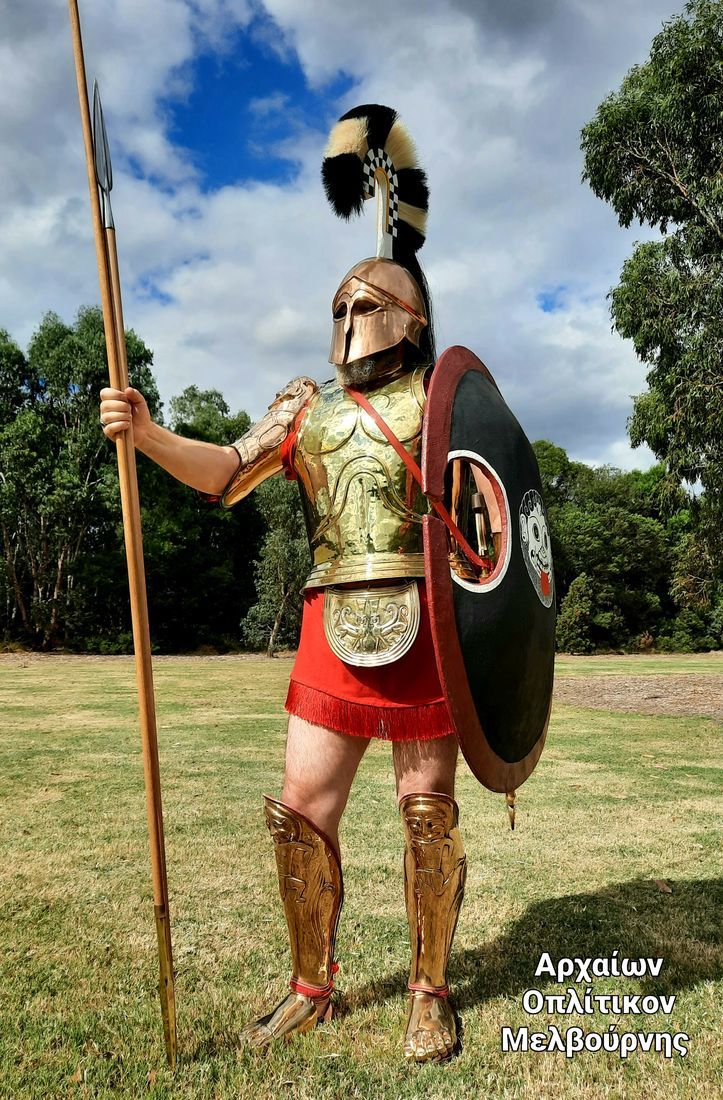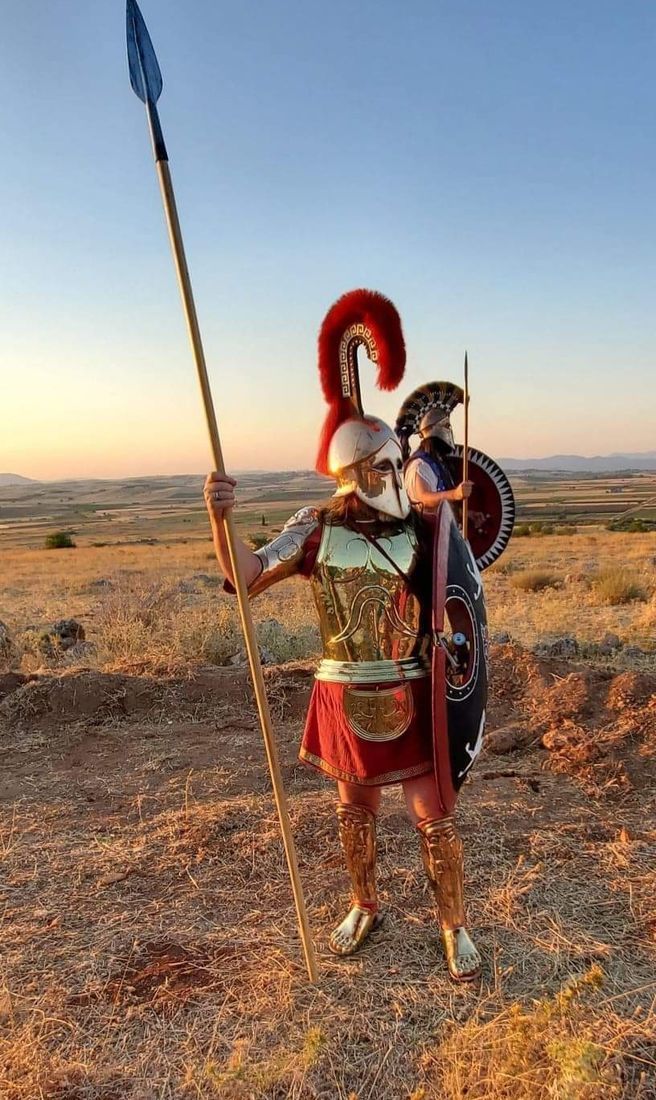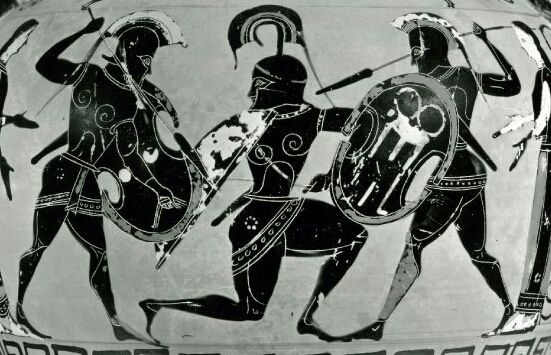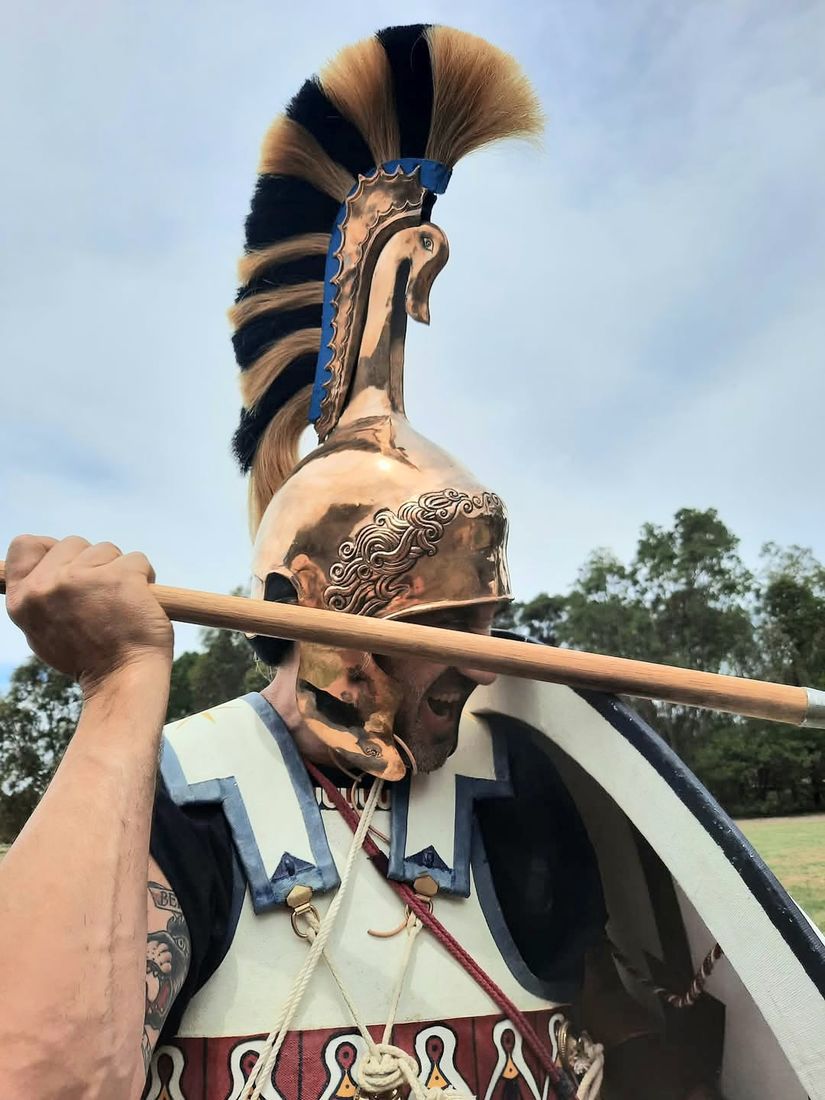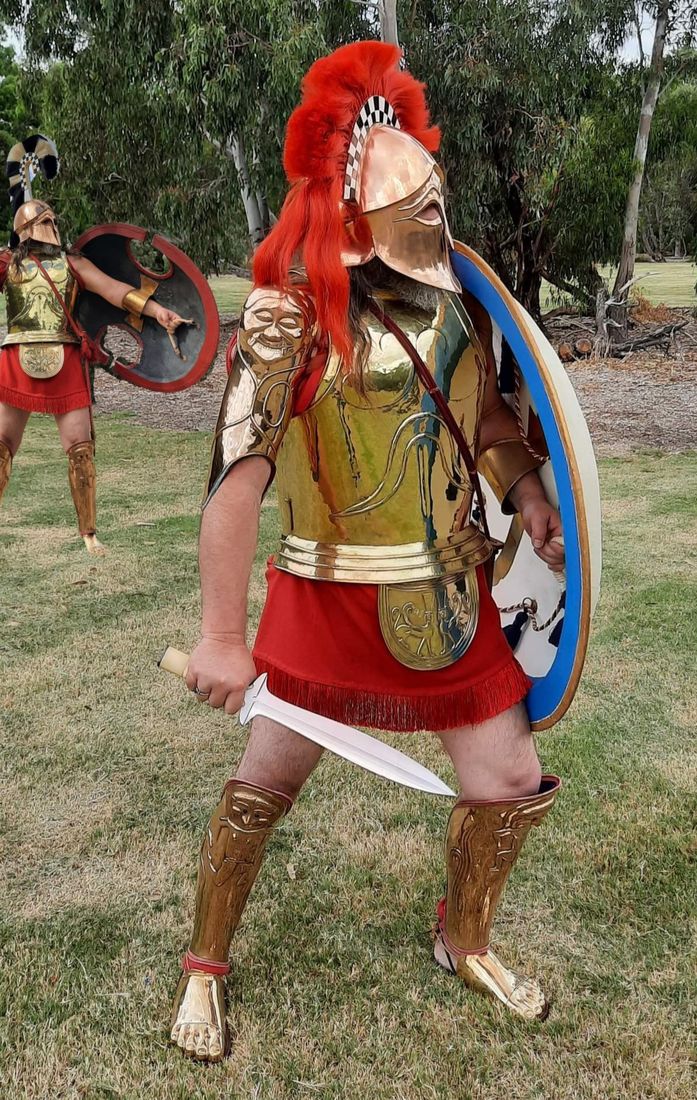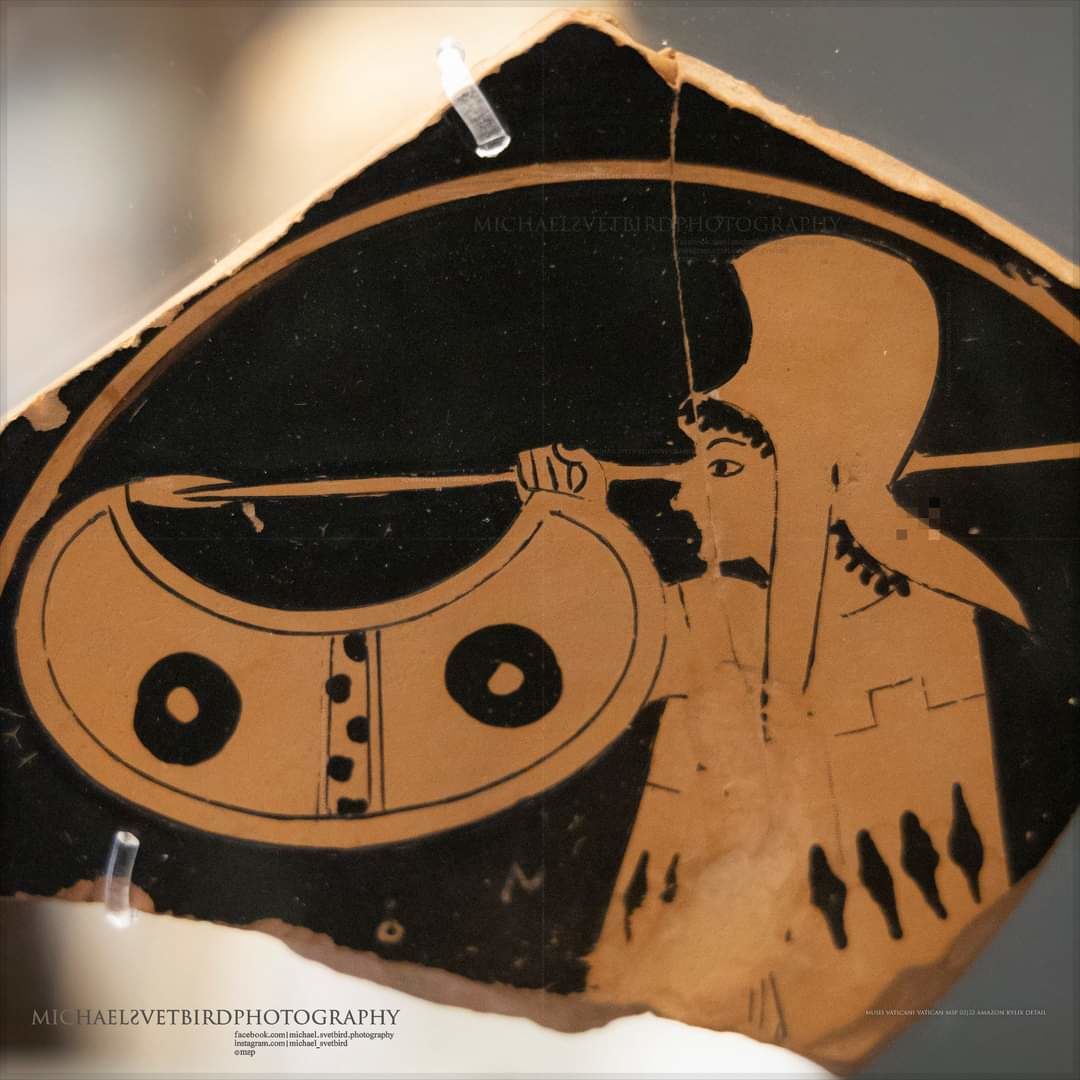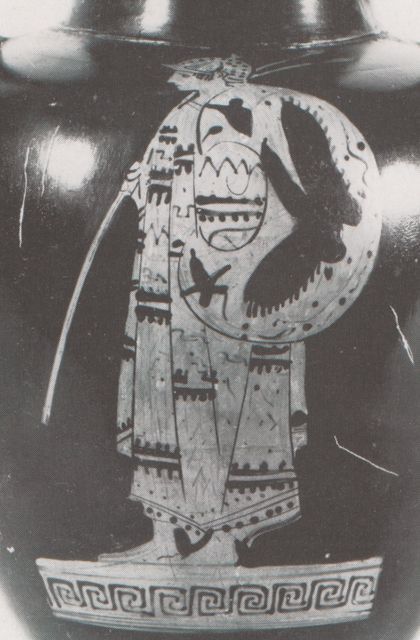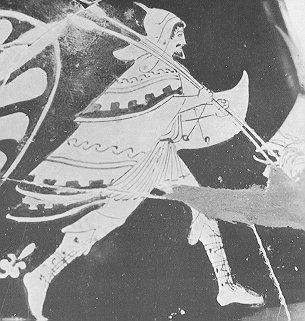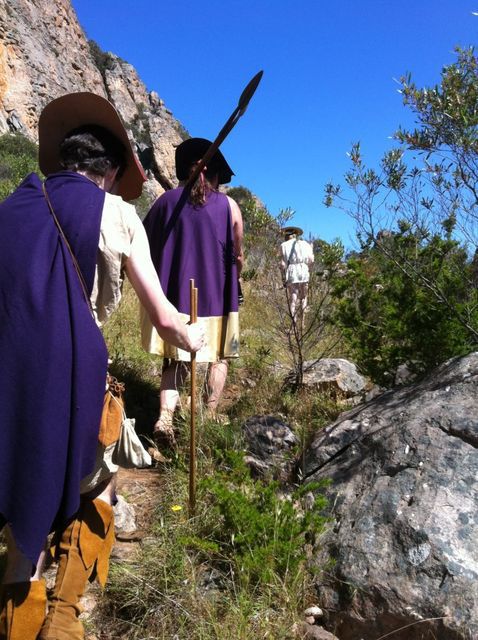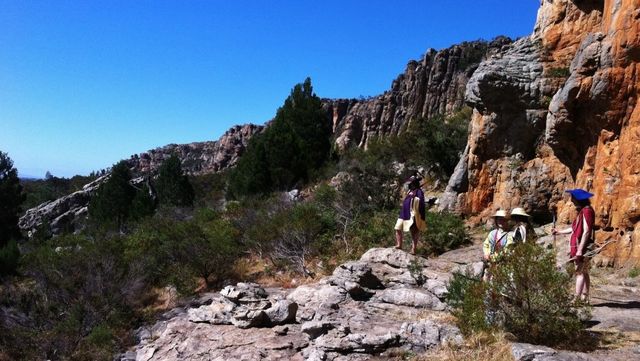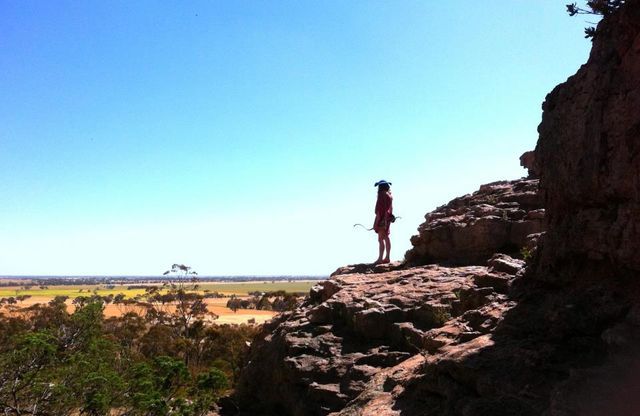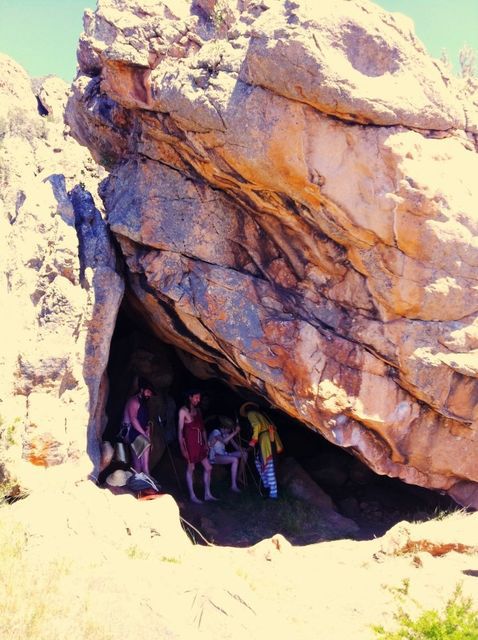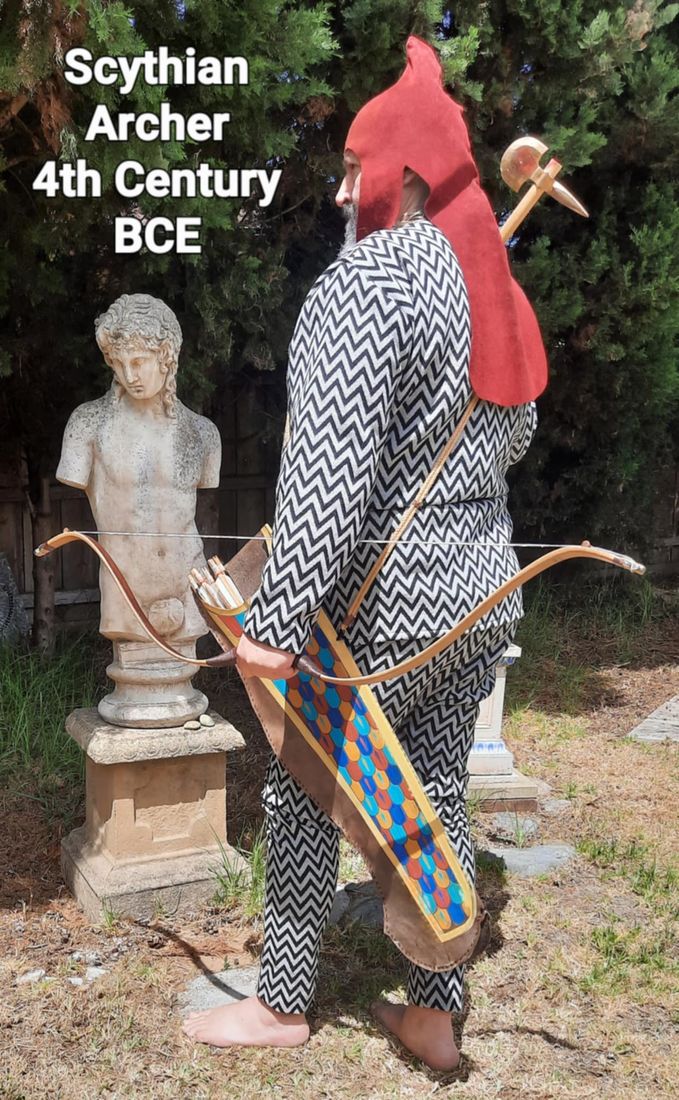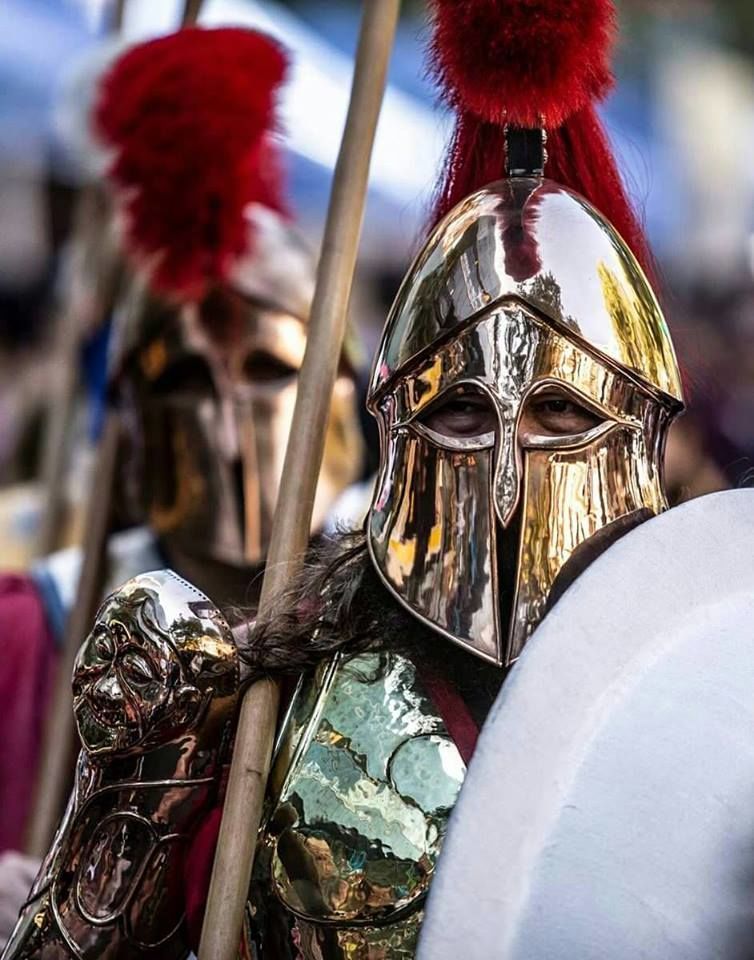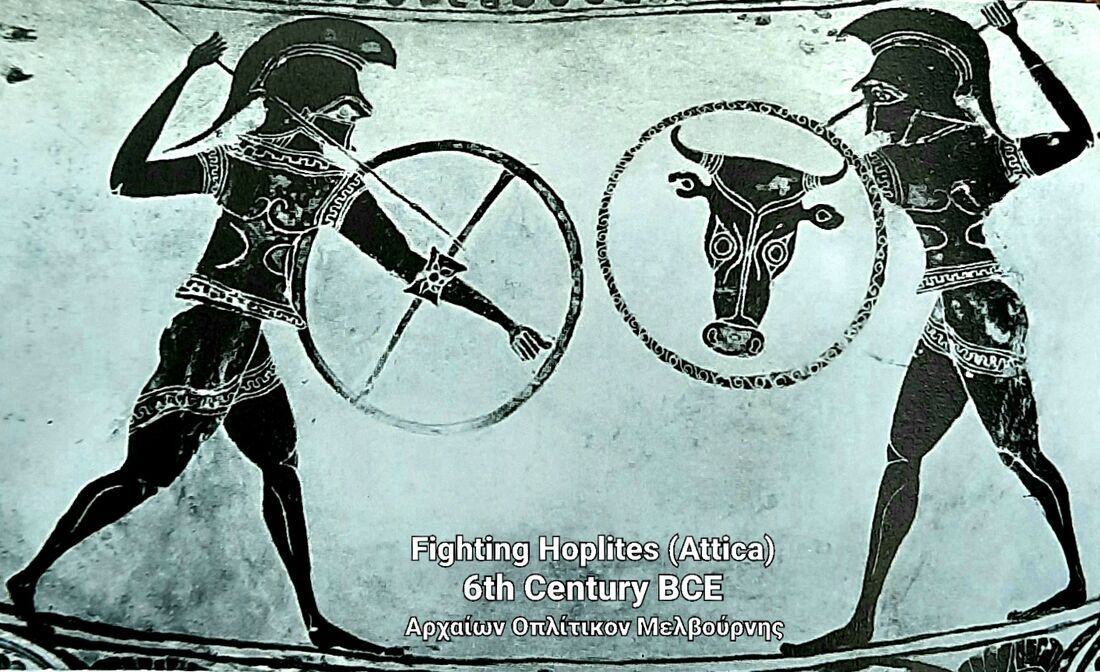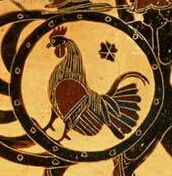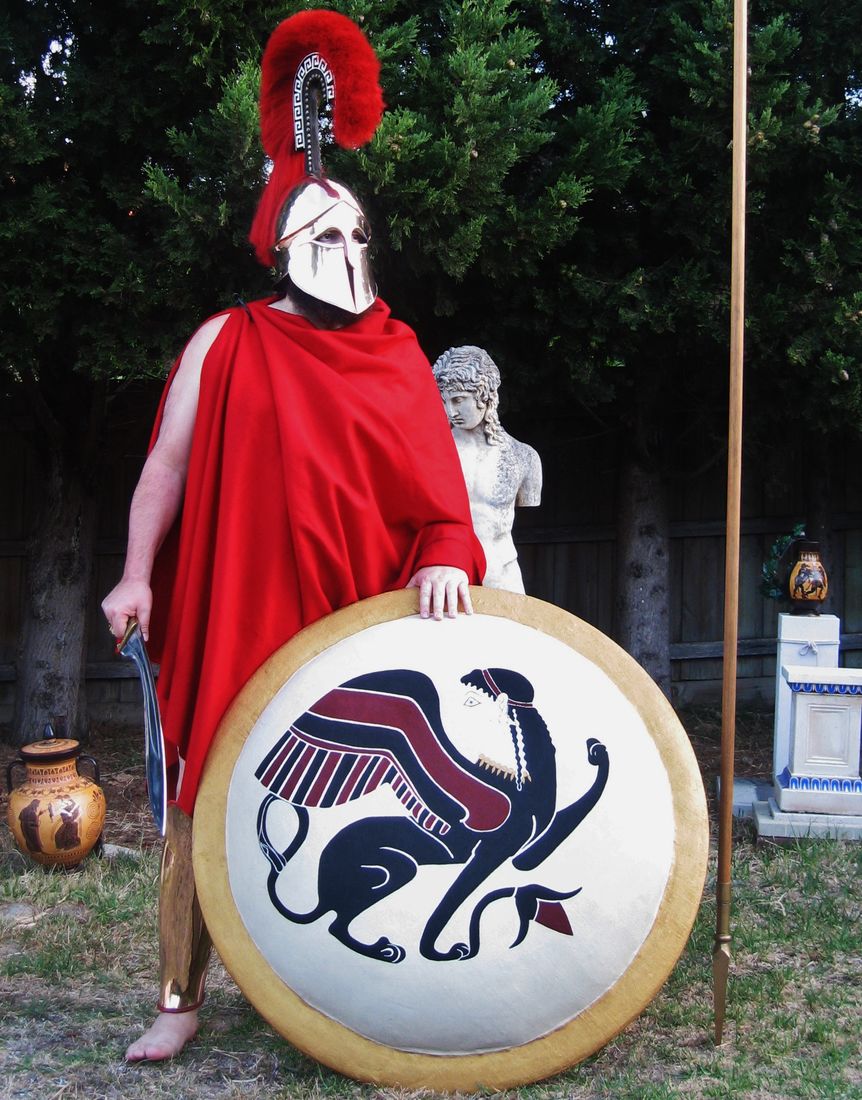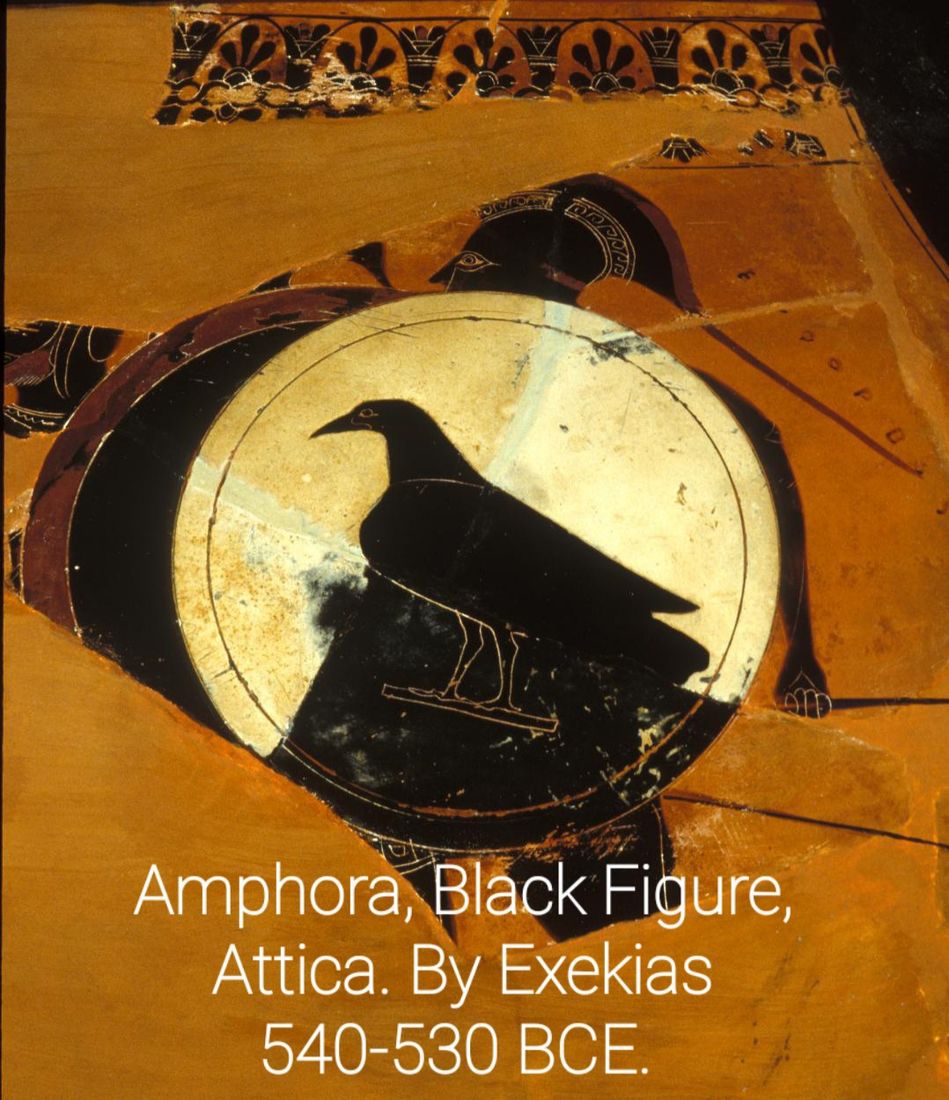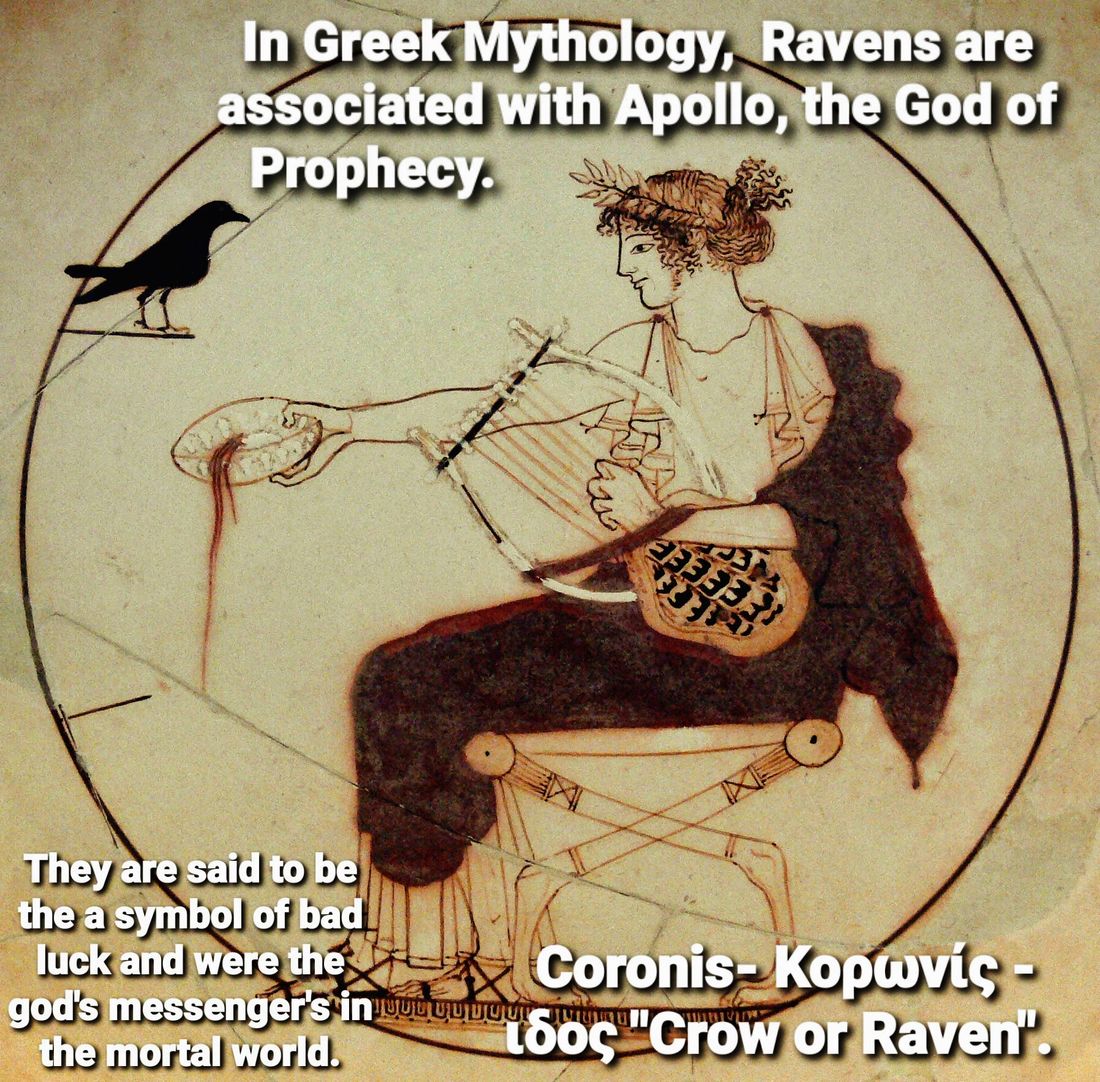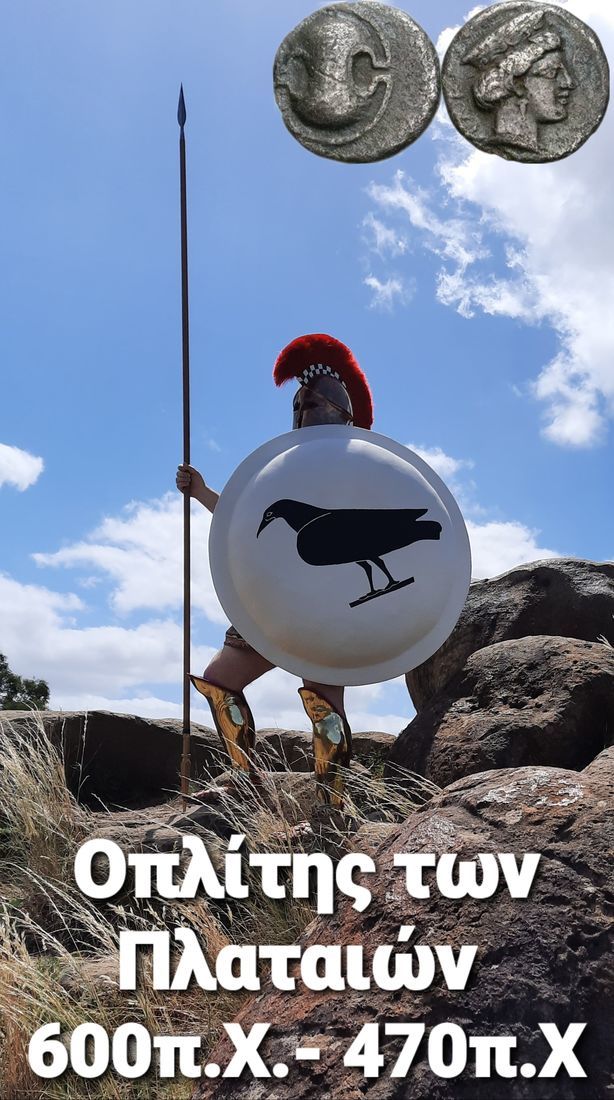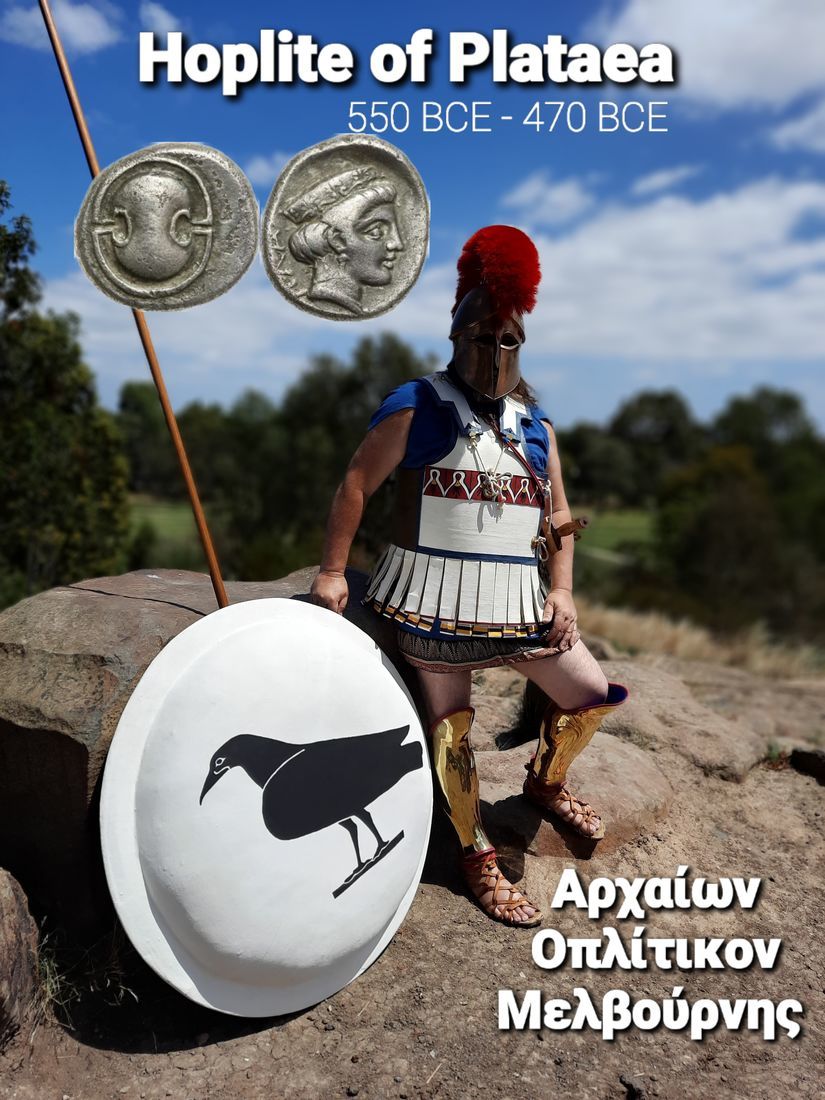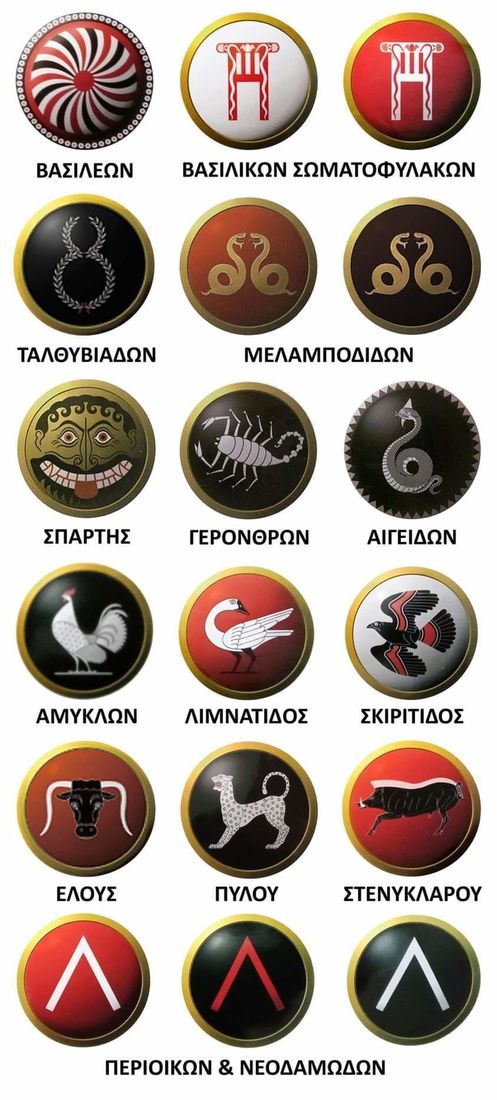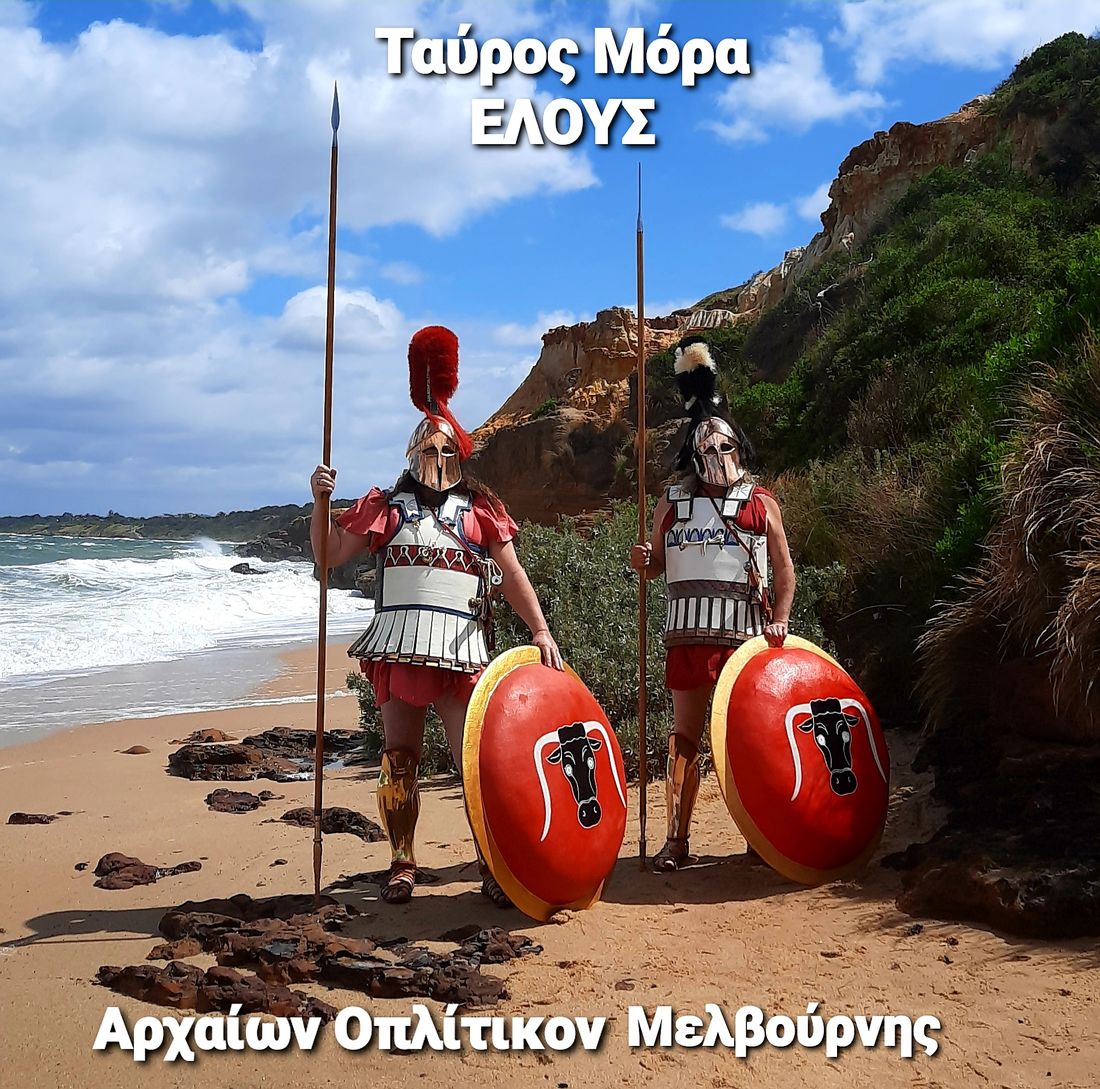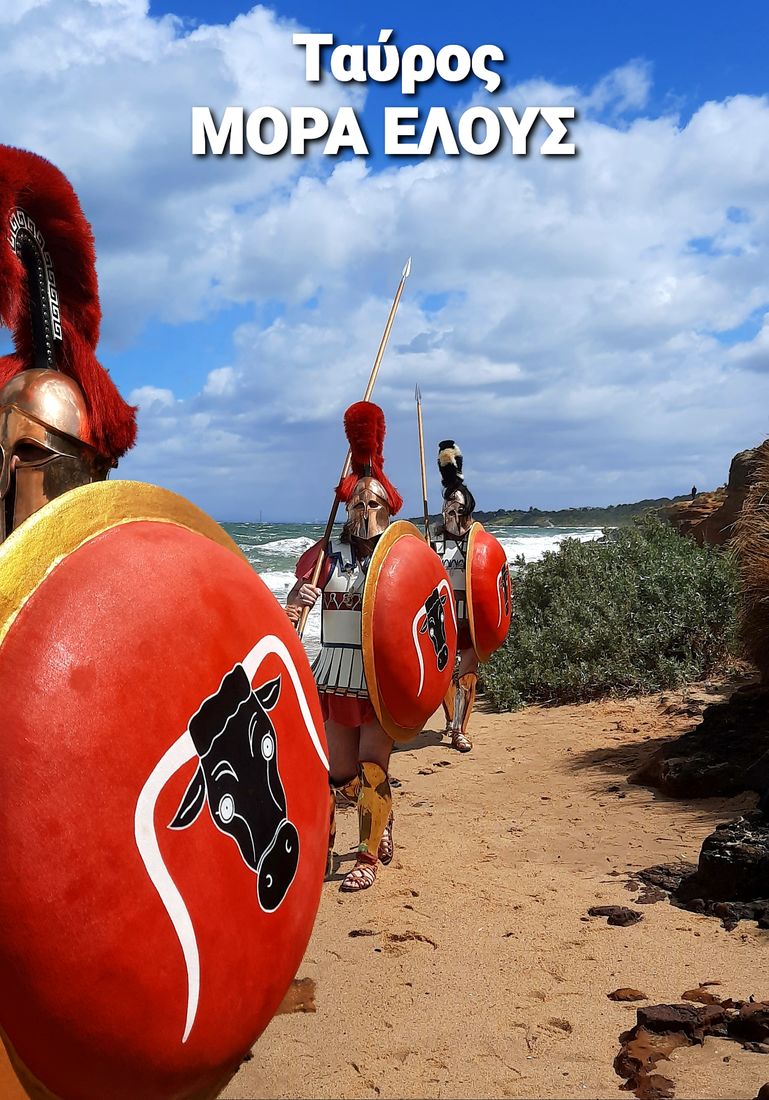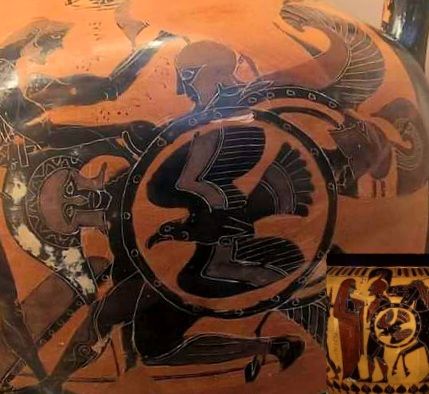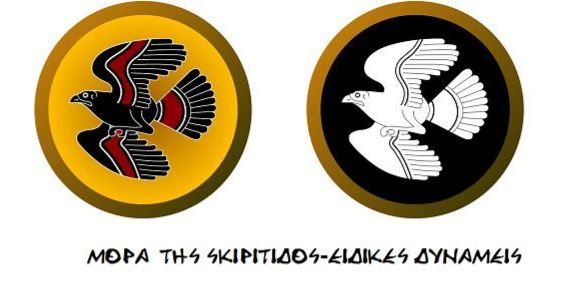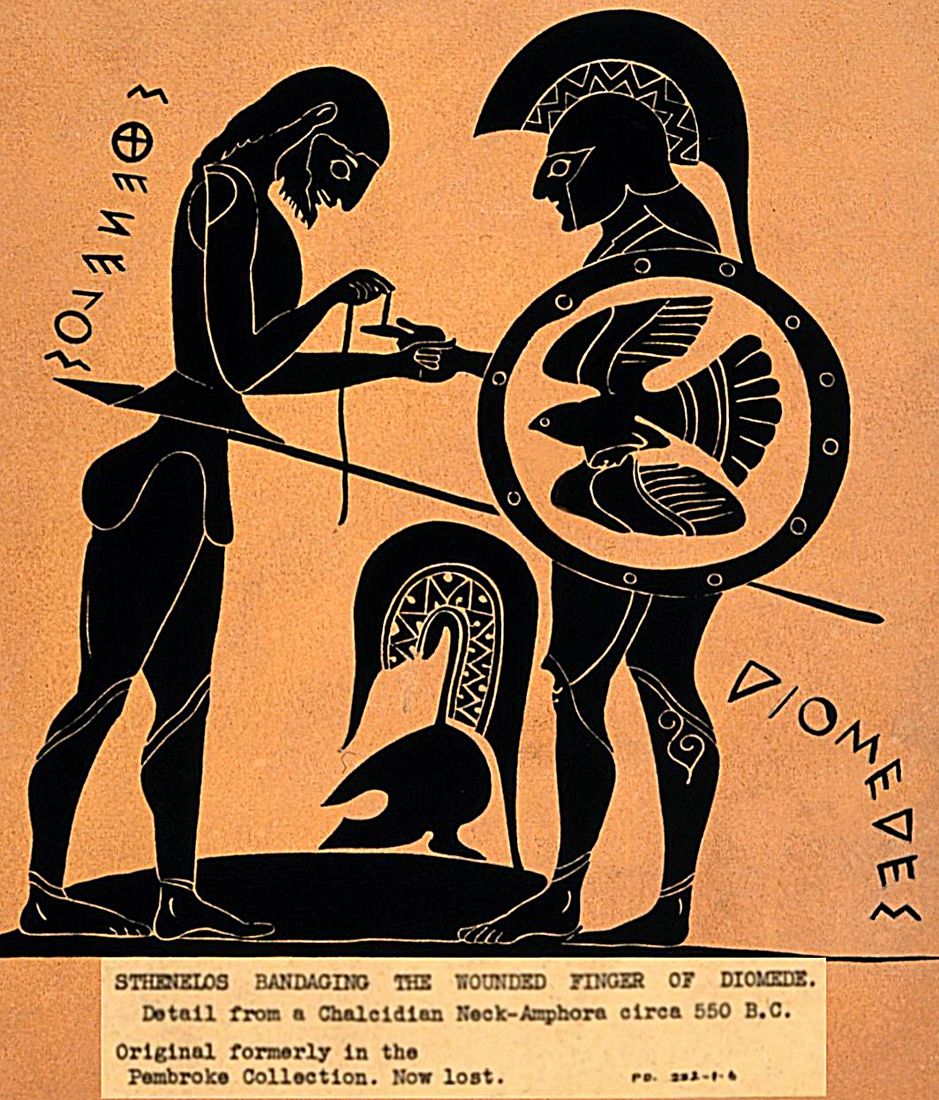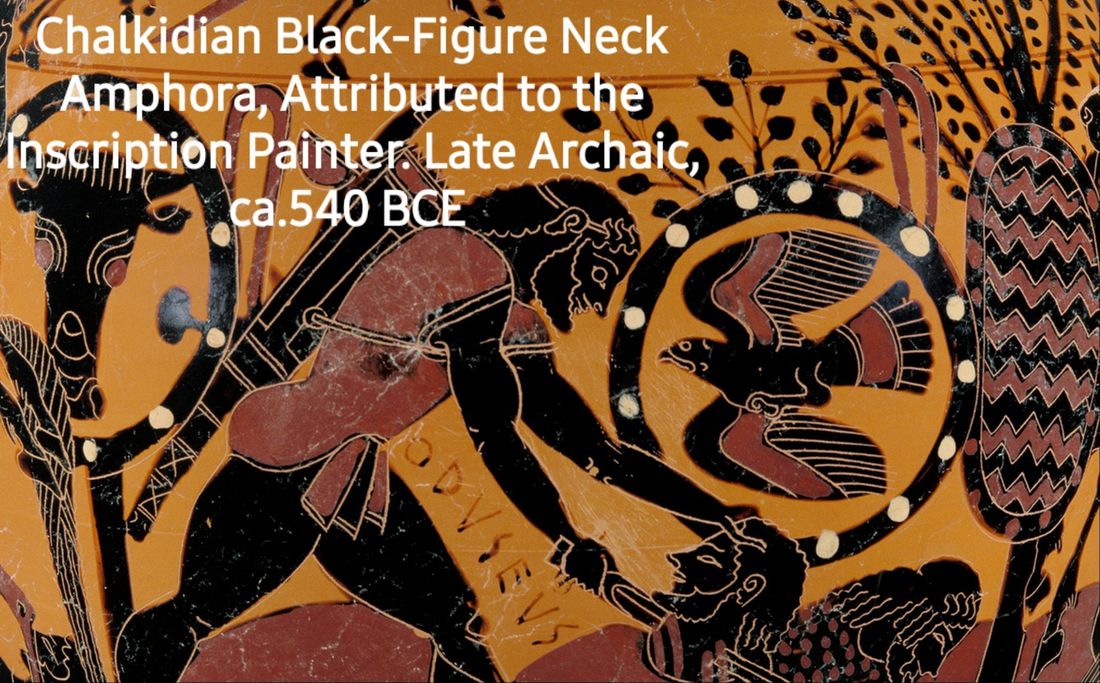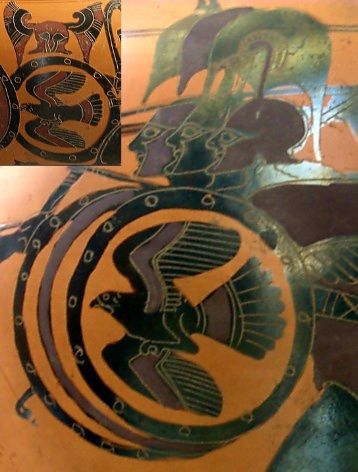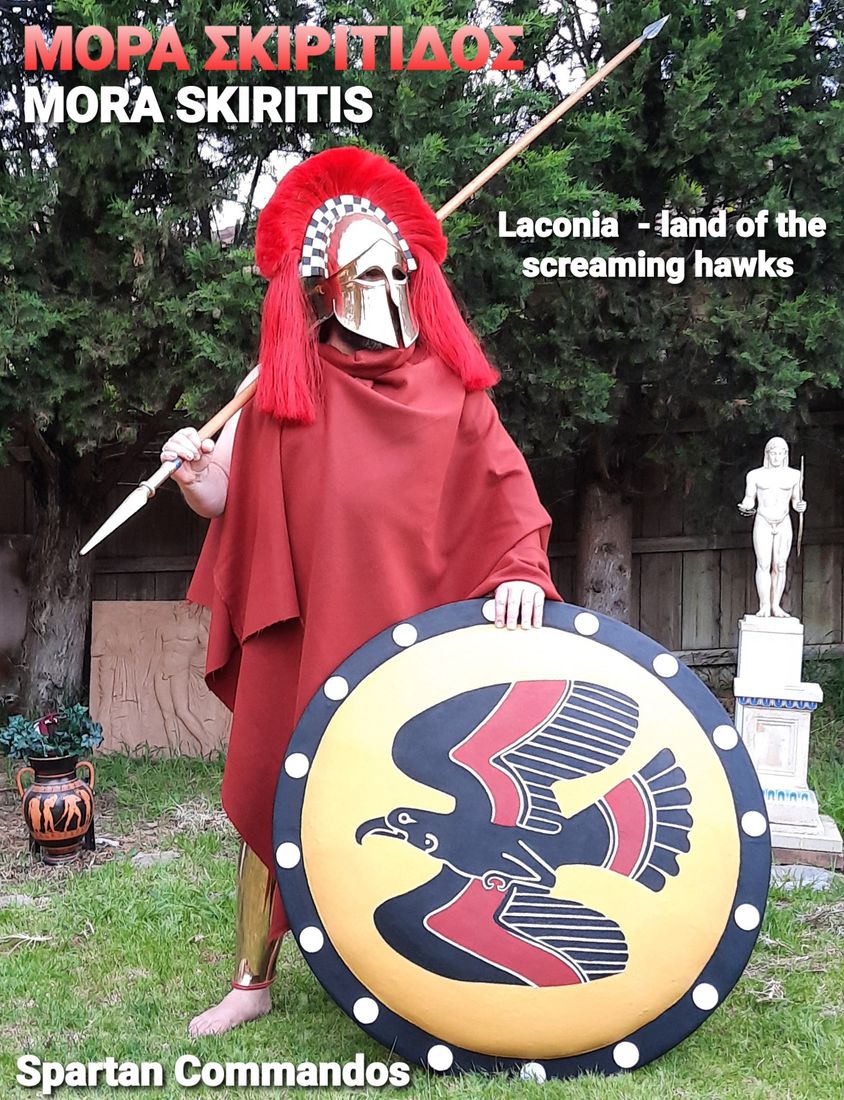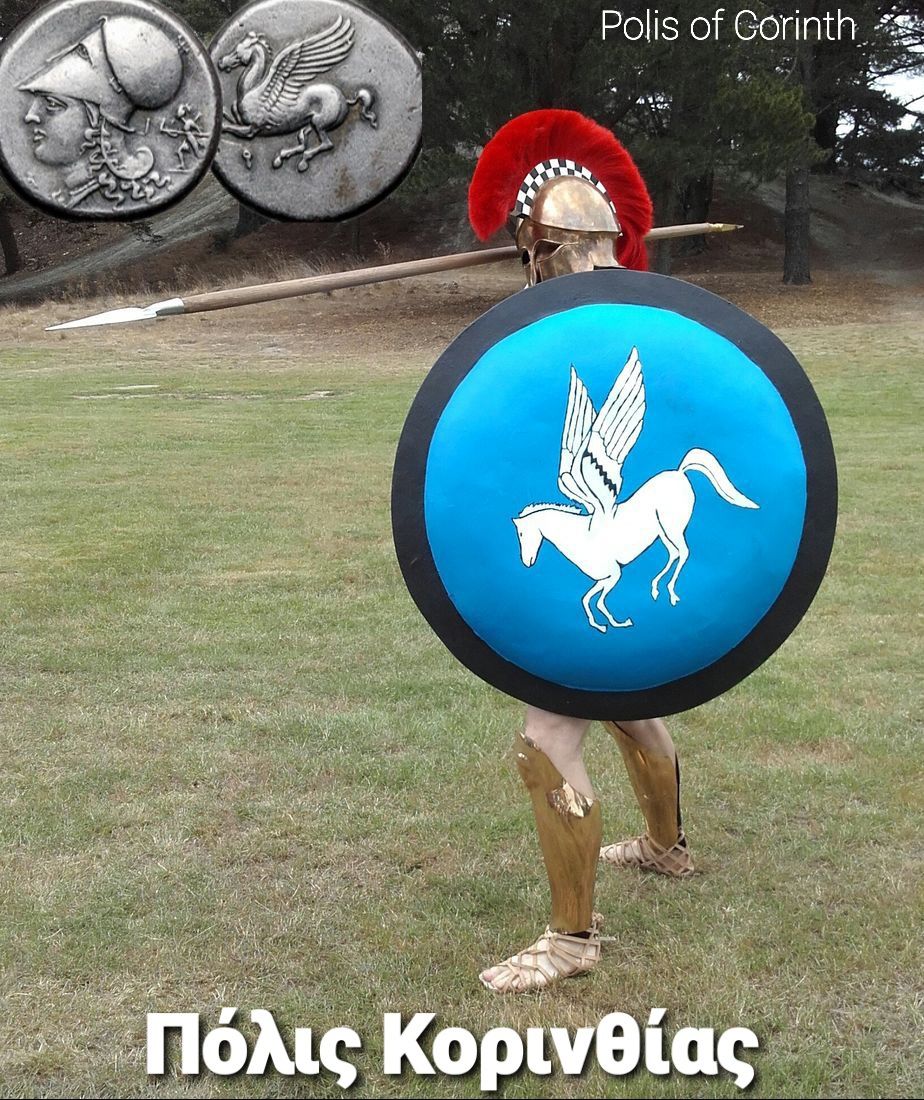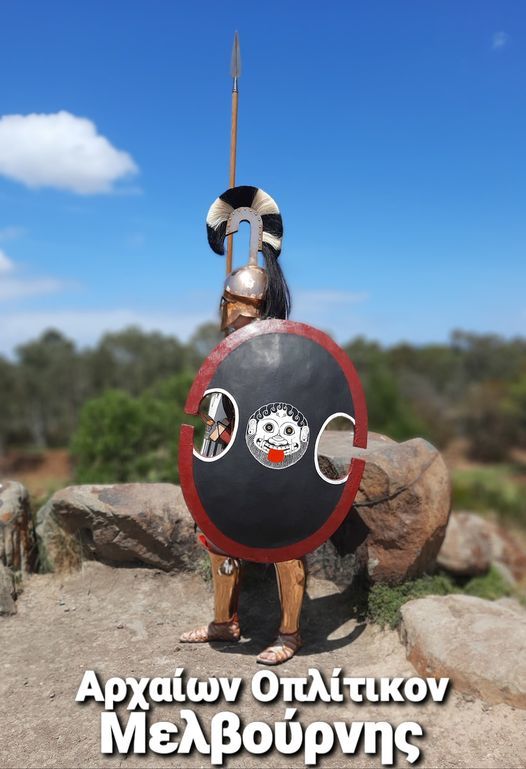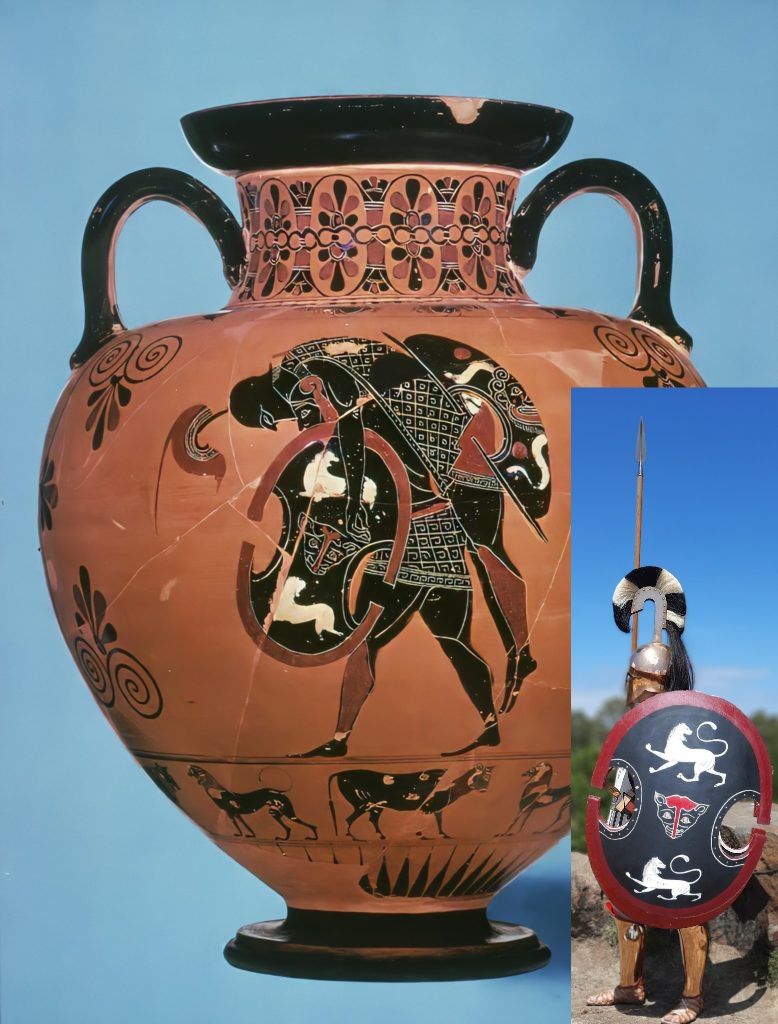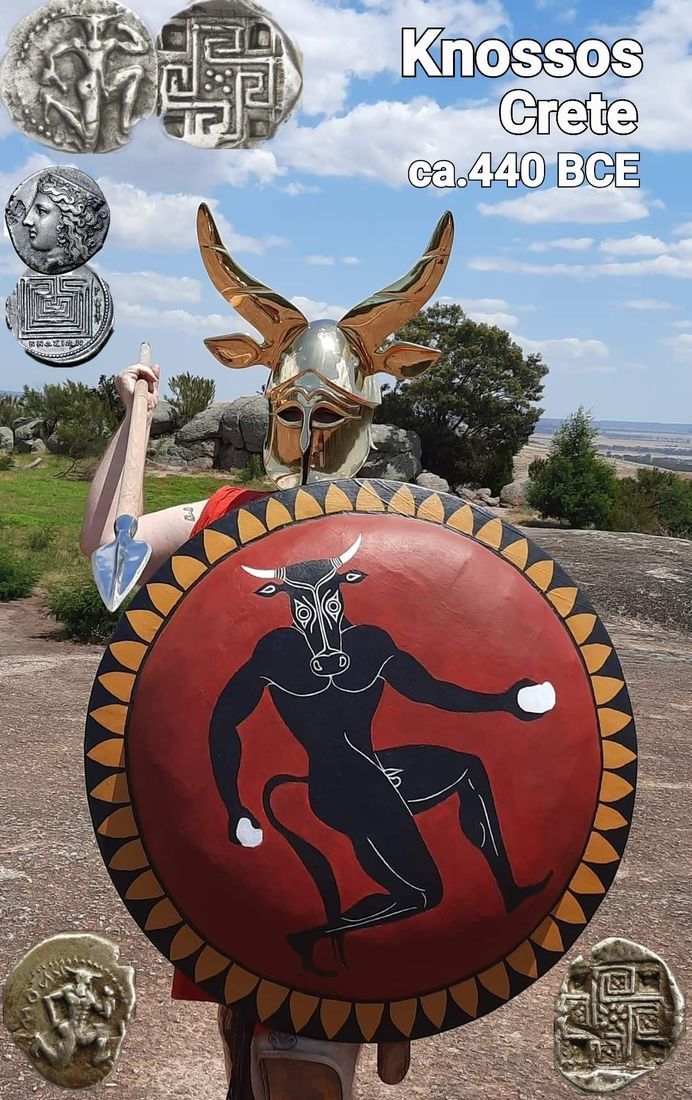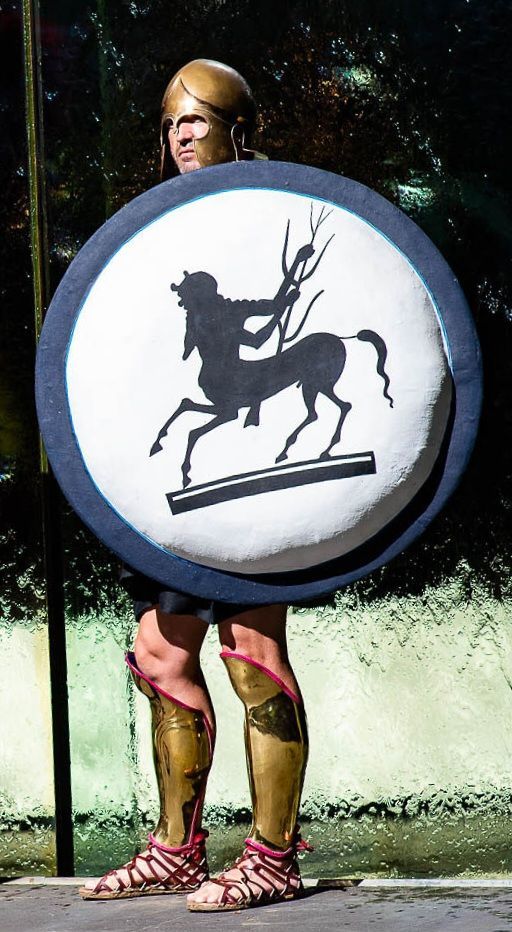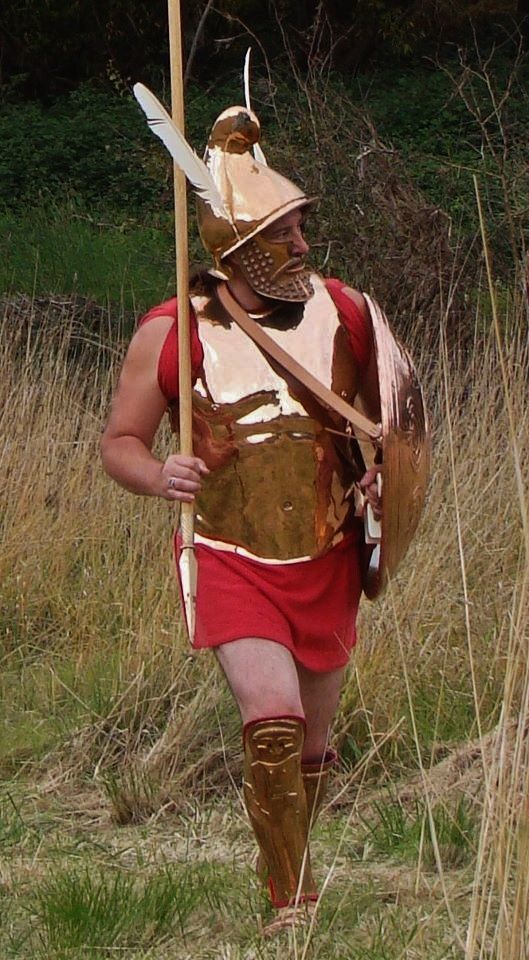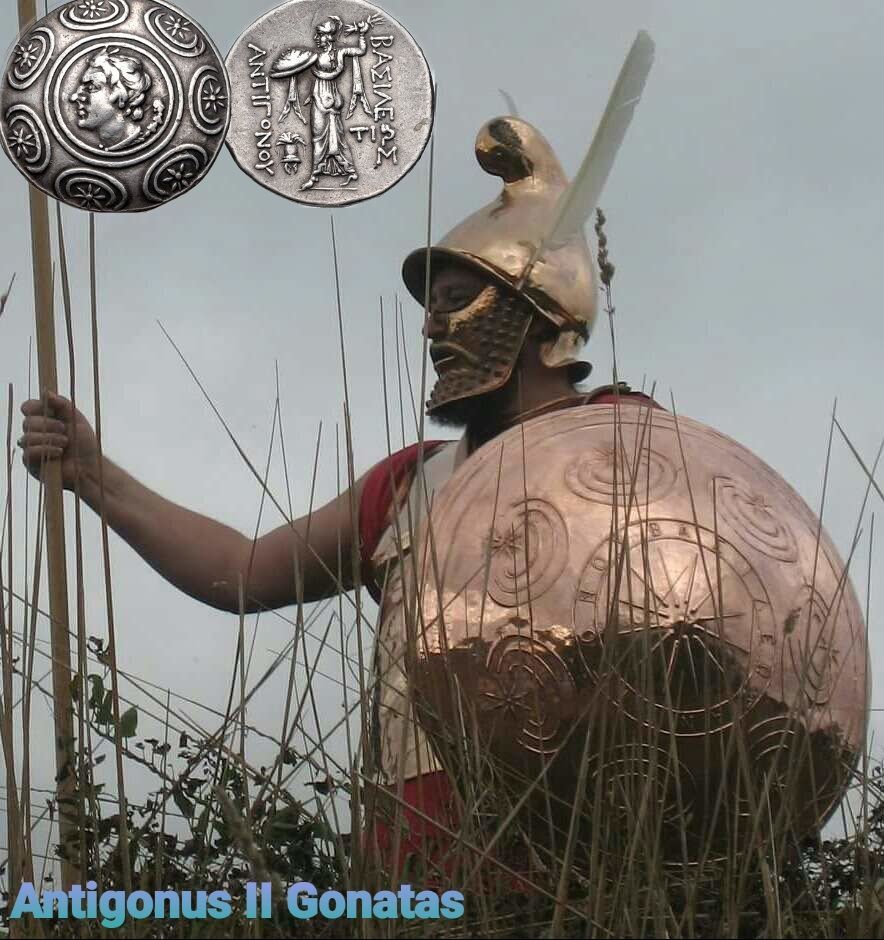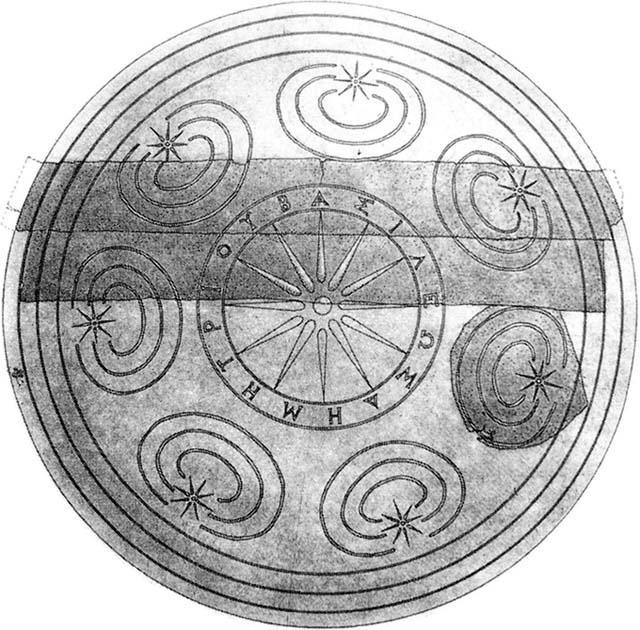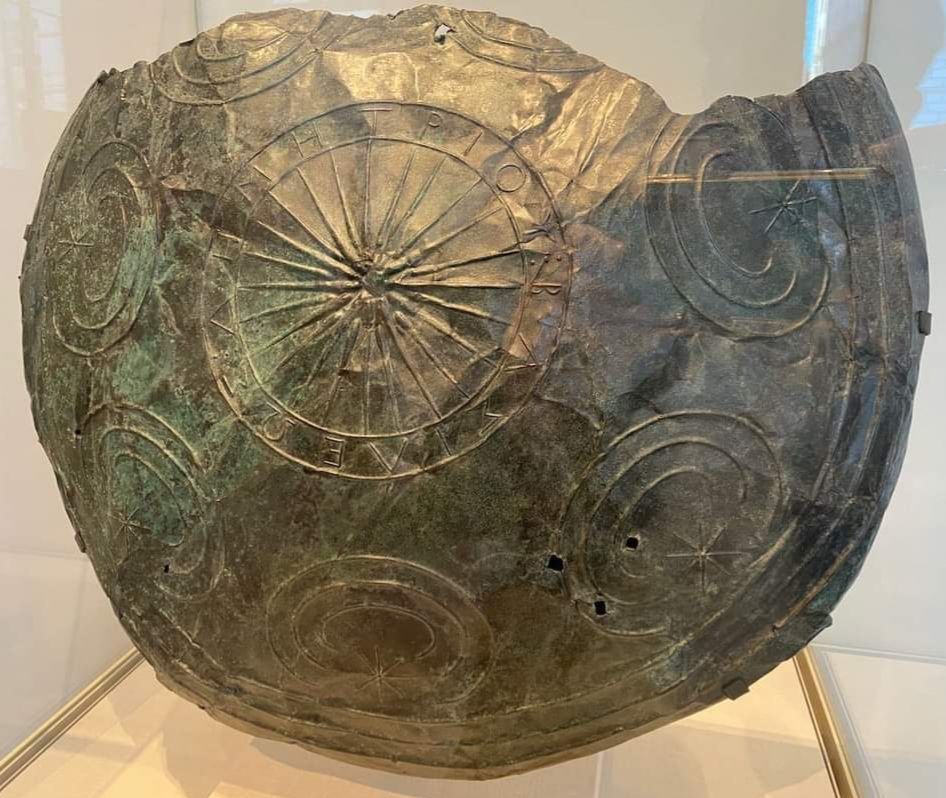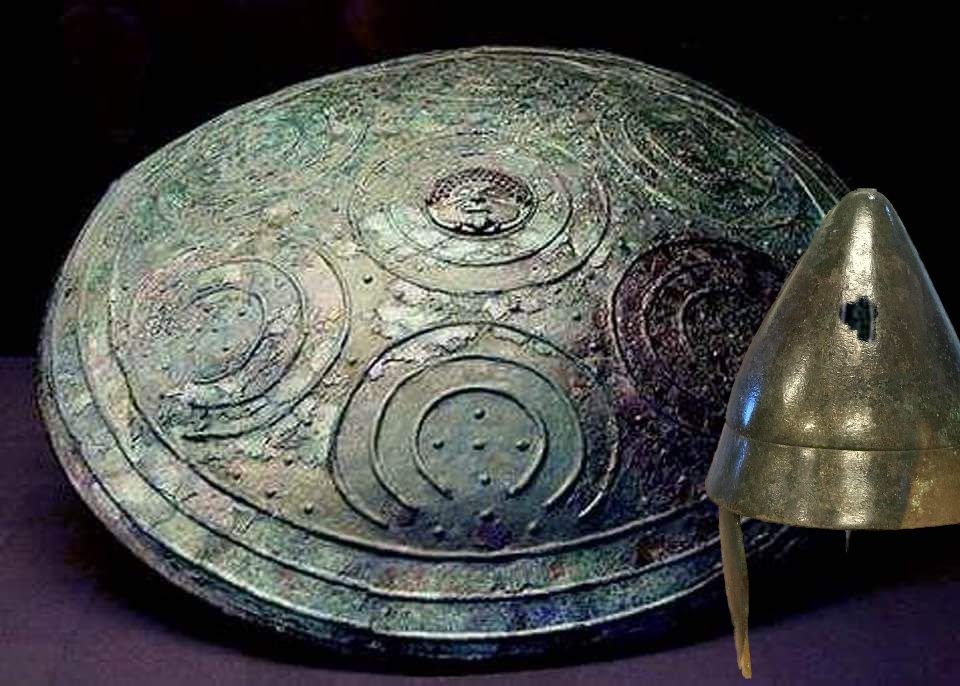The Greeks usually refferred to the Hoplite shield as "Aspis"( Aspida - ASPIDA), rarely as the Hoplon; Thus controversy rages over the etymology of the word Hoplite itself. The term may be derived from the plural "Hopla" (Armament). Rather than the singular Hoplon.
SPARTAN MORA of ELOS
Pausanias mentions a seaside polis near Sparta called HELOS, whose inhabitant's were enslaved and became Helots. HELOS was founded by Helios, the younger son of Perseus. The Polis was reduced by seige by the Dorians, and their inhabitant's became the 'First Slaves' of the Lacedaemonian State. Helos is mentioned in the Catalogue of Ships in the Iliad by Homer, under the command of King Menelaus the Lacedaemonians offered 60 ships for the Achaean Armada. The MORA of ELOS, shield iconography had the Bull's Head with Horn's Downwards. These rugged tough Oxen were in existence in Greece up to the early 20th Century and their distant cousins are still found in the Strymon area in Northern Greece. In Cape Tainaro dominating the area was a Temple of Poseidon Tauraos. Also according to Mythology/Legend, given by Arnovius ZEUS in the form of a Bull came from the sea, and mated with DEMETRA in the ELOS area and sired Persephone.
SKIRITIS HAWK SHIELD DEVICE ca. 600 - 450 BCE.
SCIRITAE
The SCIRITAE or SKIRITAI (Greek Skiritai Skiritai)
were a people subject to Sparta. Whose status is comparable to that of the Perioeci, they lived in Skiritis, a mountainous region located in Northern Laconia on the border with Arcadia, between the Oenus and Eurotas Rivers. According to Stephanus of Byzantium and Hesychius of Alexandria, the Skiritae were of Arcadian origin. Their way of life was essentially rural, their territory was inhospitable, but was of strategic importance for Sparta, since it controlled the road to Tegea. Which explains why it rapidly fell in Spartan hands. Their status was similar to that of Perioeci, but Xenophon distinguished between them, writing, "to meet the case of hostile approach at night, he assigned the duty of acting as sentries outside the lines to the Skiritae. In these days the duty is shared by foreigners, if any happen to be present in the camp.
In war the Skiritae formed an Elite Corps of light infantry, a Lochos (Battalion) of about 600men, which were used as a complement to the Civic Army. According to Thucydides (v.67) They fought on the Extreme-Left Wing in the battle line, the most threatening position for the Hoplite Phalanx. "In this battle, the Left Wing was composed of the Skiritae, who in a Lacedaemonian Army have always held that post to themselves alone". At night, they were placed as sentinels ahead of the Army (Xenophon, Constitution of the Spartans xii.3) and acted as scouts to open the way for the King, whom they only precede.
(Pausanias, 2.5.1.)
According to legend, the winged horse Pegasus drank at the spring and was captured and tamed by Corinthian Hero Bellerophon.
The winged horse was the symbol of Corinth, each Citizen of this important seaport felt the Polis and himself connected with Pegasus.
Pegasus , PhgasoV in Archaic Greek Mythology, Pegasus is the offspring of the Gorgon Medusa. The Olympian god Poseidon is identified as the father
of Pegasus. Pegasus was caught by the Greek Hero Bellerophon near the Fountain Peirene (Physically located in Corinth), with the help of Athena and Poseidon . Pegasus allowed Bellerophon to ride him in order to defeat the monstrous 'Chimera', which led to many other exploits.
570 BCE the inhabitants start to use silver numismatics called 'Colts' or 'Foals'.
Corinth was a major participant in the Persian Wars, sending 400 Hoplites to defend Thermopylae and supplying Forty Warships for the Battle of Salamis
480 BCE. In 479 BCE 5,000 Hoplites with their characteristic Corinthian Helmets, engaged in the following battle
of Plataea. In the aftermath of battle the Greeks moved on to besiege Thebes, which had sided with the Persians. After nineteen days the Theban Leaders agreed to surrender to avoid further devestation of their city. In order to prevent them from bribing their way to safety, Pausanias had the surrendered Theban Leaders taken to the Isthmus of Corinth where they were executed. Herodotus, who disliked the Corinthians, mentions that they were considered the second best fighters after the Athenians.
AIAS the Great, AiaV Ajax the Great Shield iconography (Amphora pictorial's) ca.540-530 BCE.
ANCIENT HALIARTOS - AliartoV
Polis of Ancient Boeotia, and one of the cities of the Boeotian League. It is mentioned in the Catalogue of Ships in the Iliad by Homer, who gives it the Epithet poiheiV in consequence of it's well-watered meadows. In the invasion of Greece by Xerxes I in 480 BCE, it was the only Polis that remained true to the cause of Greece, and was in consequence destroyed by the Persians. It was however, soon rebuilt, and in the the Peloponnesian War appears as one of the chief cities of Boeotia. It was chiefly memorable in history on account of the battle of Haliartos fought under it's walls between Lysander and the Thebans in which the former was slain, 395 BCE. In 171 BCE Haliartos was Destroyed a second time. Having espoused the cause of Perseus of Macedon, it was taken by the Roman Preator Lucretius, who sold the inhabitants as slaves, carried off it's statues, paintings and other works of art and raised it to the ground,
KNOSSOS CRETE ca. 440 -360 BCE
Shield Device of the most famous of all Mythological Creatures the Minotaur, which had the head of a Bull and a body of a man. In the Style of the Archaic Period, with the Minotaur positioned in the familiar kneeling running stance, it does in fact date from the Classical period. This is usually attributed to the fact that Crete was more isolated than the city-states on the mainland and Therefore developed more slowly. The Legend here is the Minotaur story where in Athens was subject to Knossos and paying tribute . The Legend contains a creature living in a Labyrinth who was half-man & half-bull. Bulls are frequently featured on pottery and frescoes found at Knossos, where the intricate layout of the palace might suggest a Labyrinth. One of the most common cult-symbols, often seen on palace walls, is the Double-Axe called the LABRYS, which is a Carian word for a type of tool or weapon.
According to the Ancient Geographer Strabo the Knossians colonized the city of Brundisium in Italy. In 343 BCE, Knossos was allied with Philip II of Macedon. In Hellenistic times Knossos came under Egyptian influence, but despite considerable military efforts during the Chremonidian War (267-261 BCE) , the Ptolemies were not able to unify the warring city-states. In the Third Century BCE Knossos expanded it's power to dominate almost the entire island, but during the Lyttian War in 220 BCE, it was checked by a coalition led by the Polyrrhenians and the Macedonian King Philip V. Twenty year's later the Cretan War (205-200 BCE) the Knossians opposed Philip V aided by Roman & Rhodian aid, liberating Crete from Macedonian influence. In 36 BCE, Knossos became a Roman Colony.
CENTAUR Shield Device
from IOLCOS of Thessaly, Central Greece
and Arcadia Western Peloponnese
ca. 520 - 460 BCE.
Centaurs were born of Ixion and Nephele, the etymology comes the Ancient Greek
"KEN - TAUROS" meaning "Piercing Bull"
In Ancient Greek Mythology they lived in the forests around Mount Pelion
in Thessaly. Others lived in Arcadia or even Epirus.
While Centaurs with Bull Horns were said to live in Cyprus.
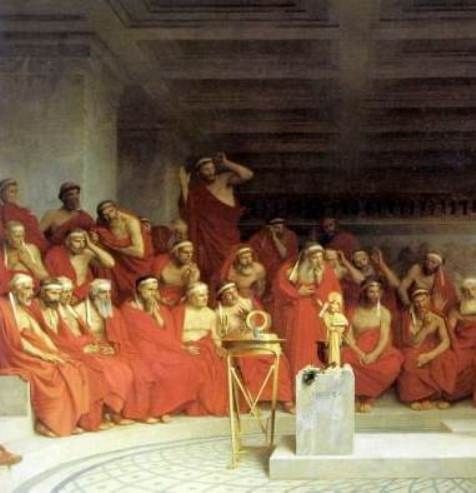
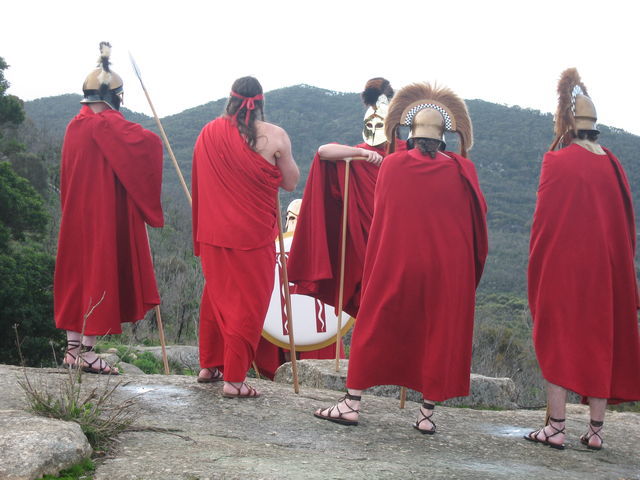
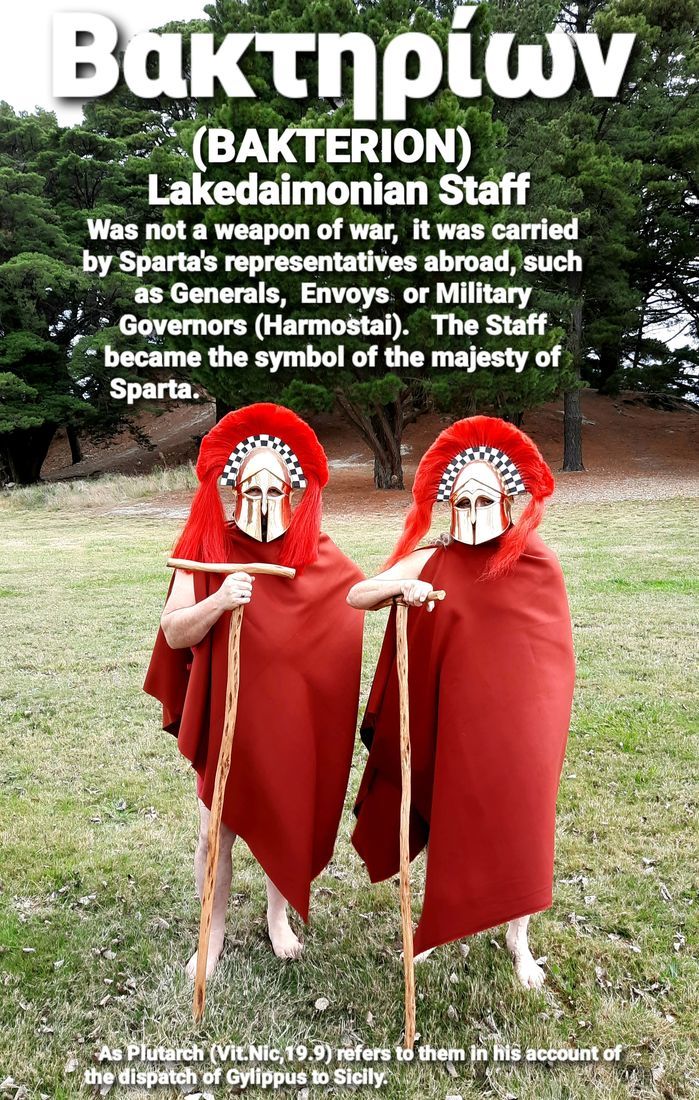
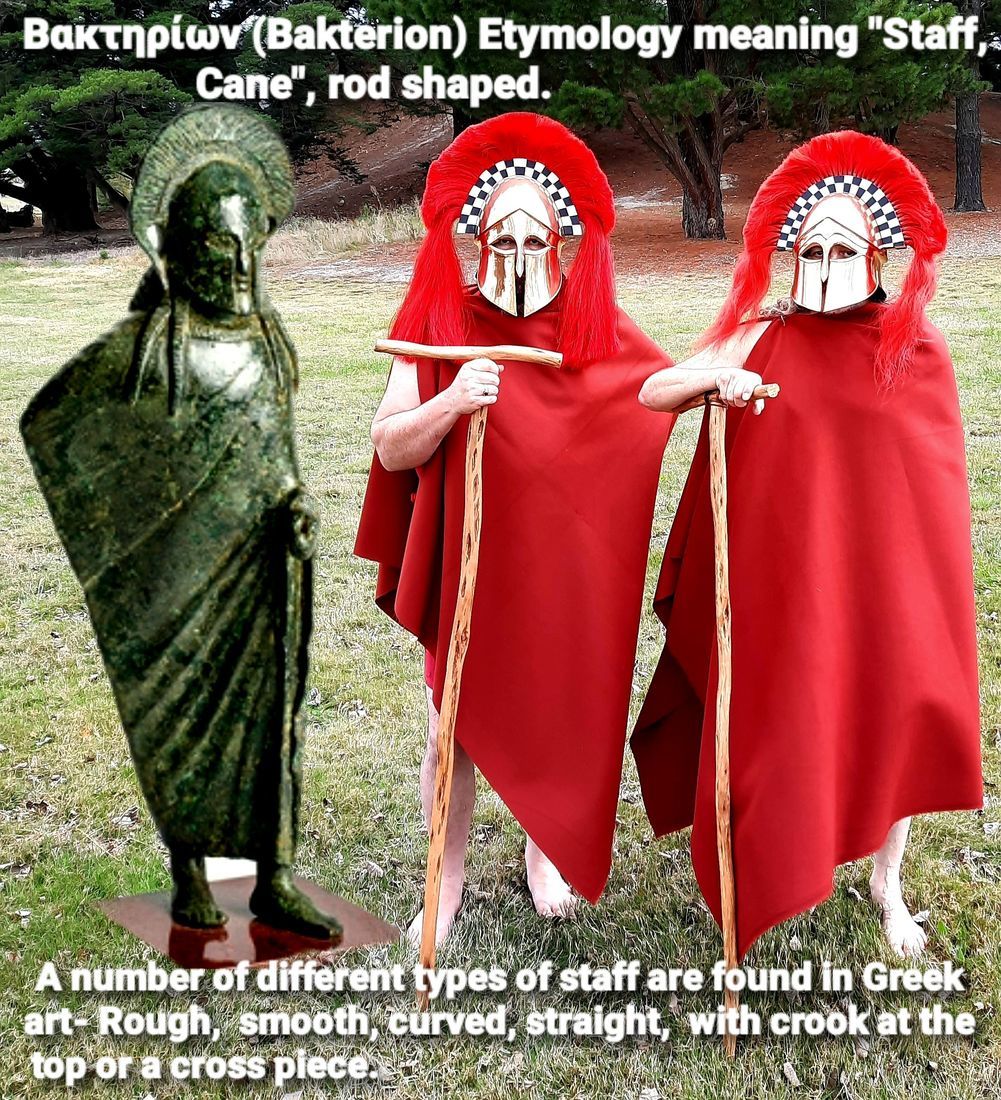
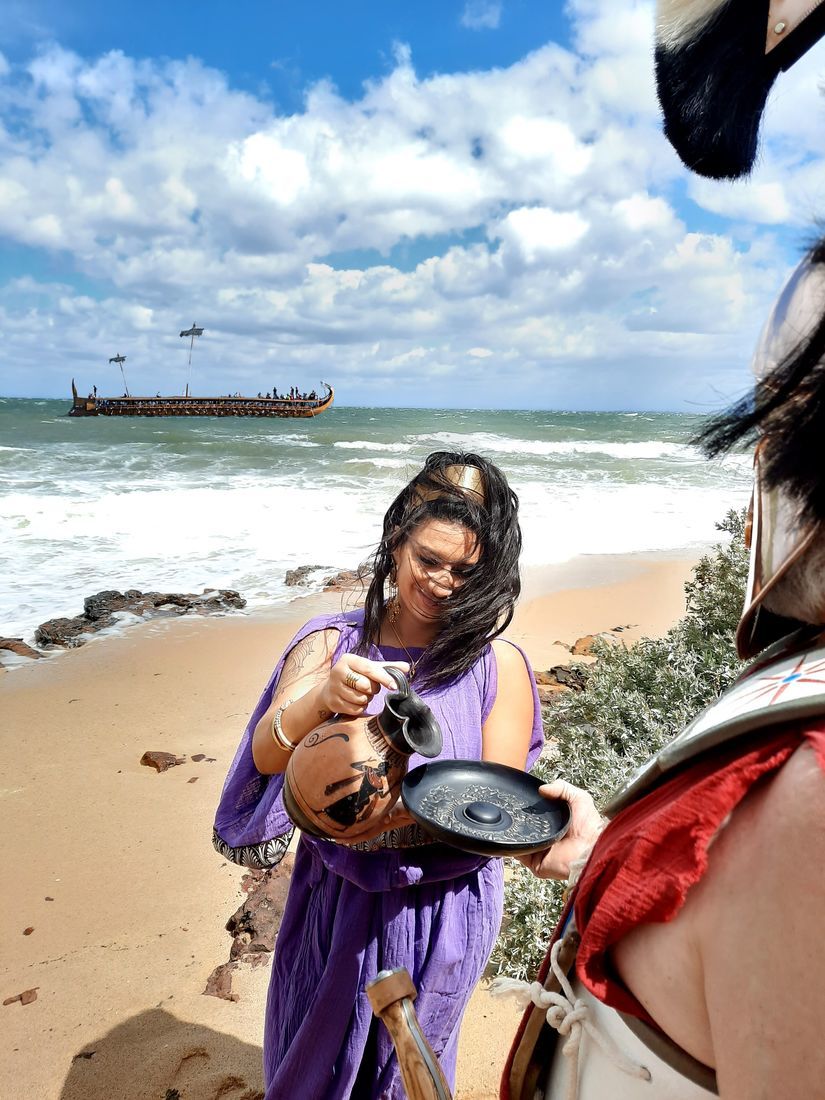

![]()
